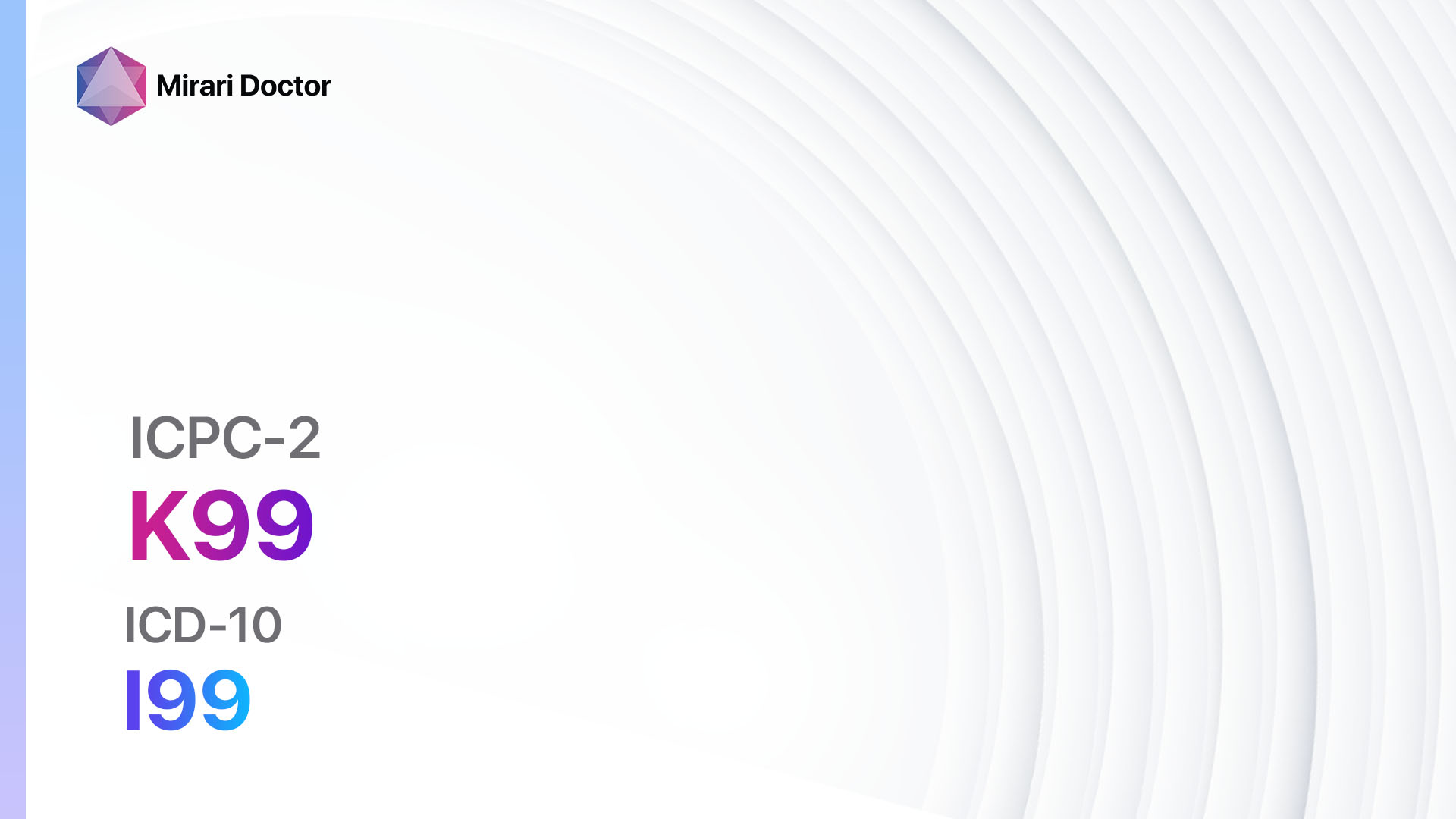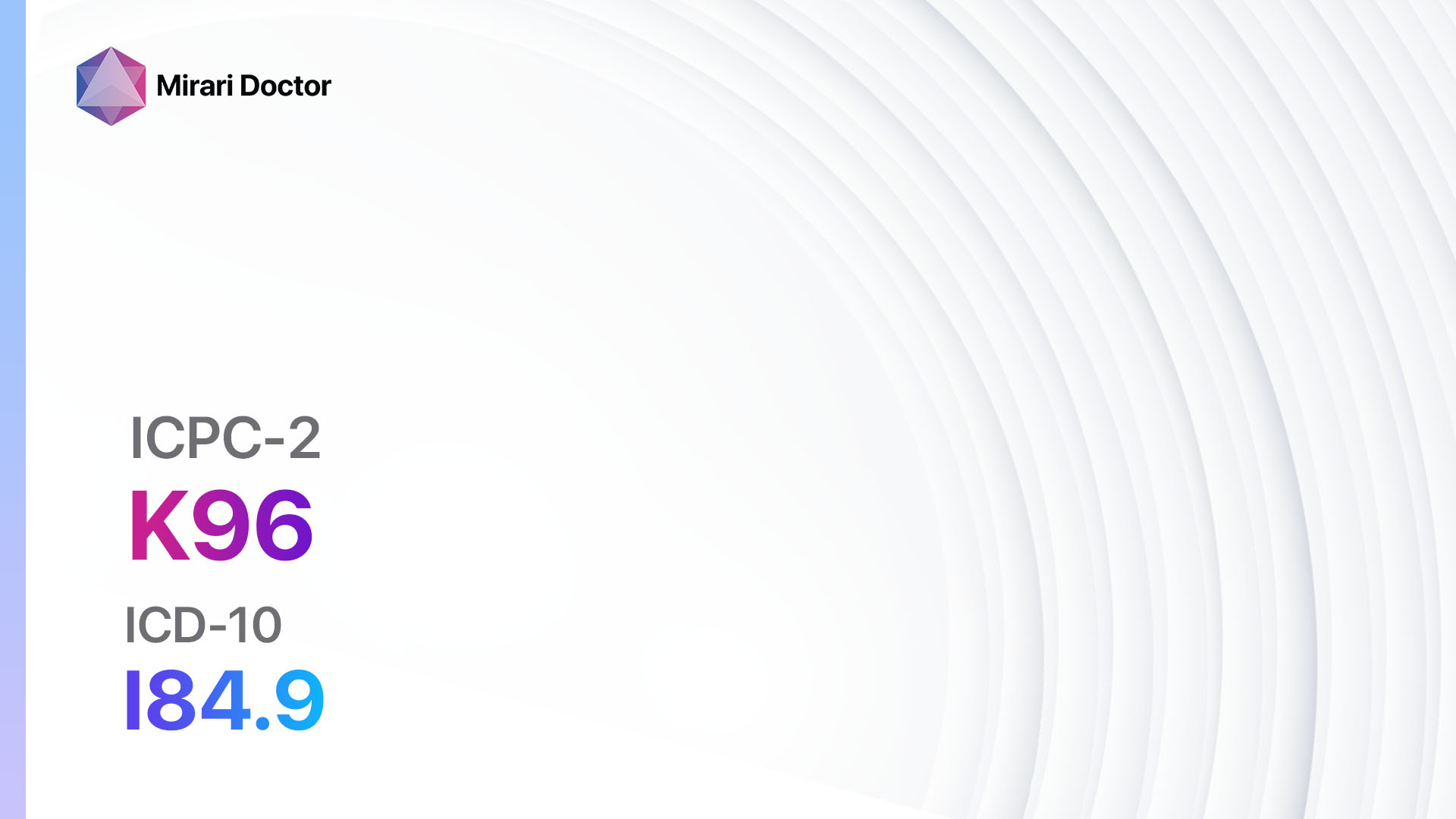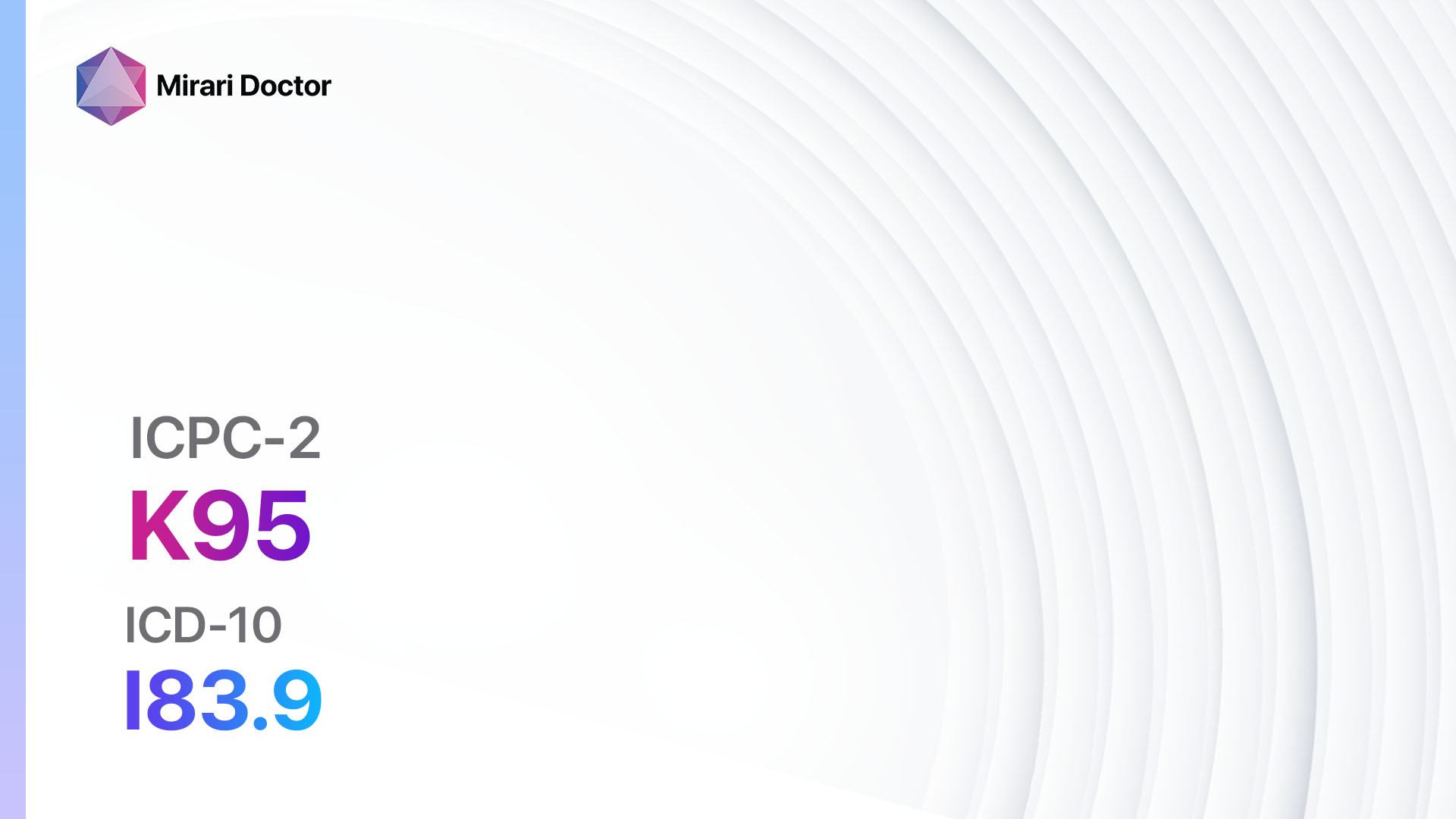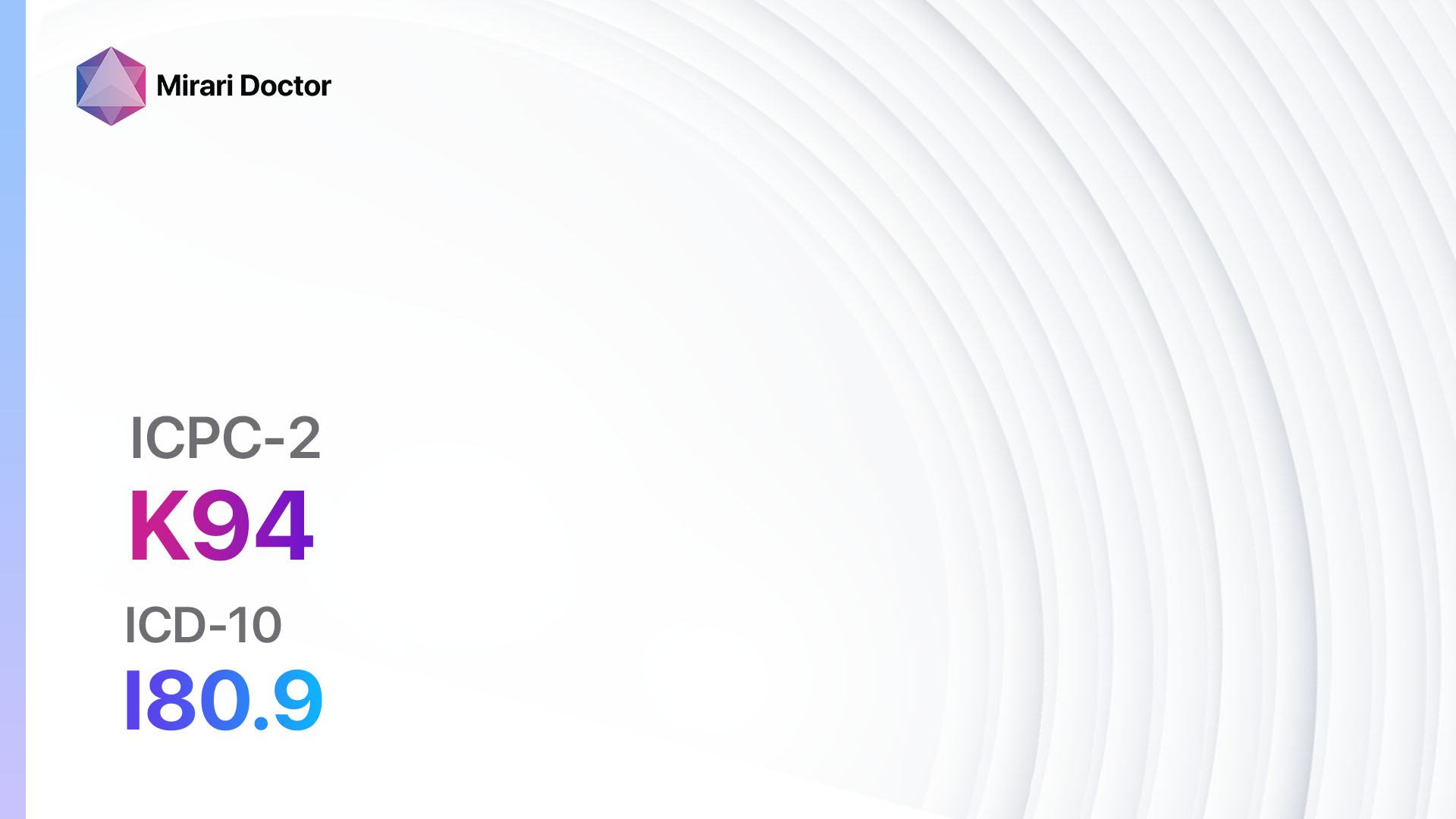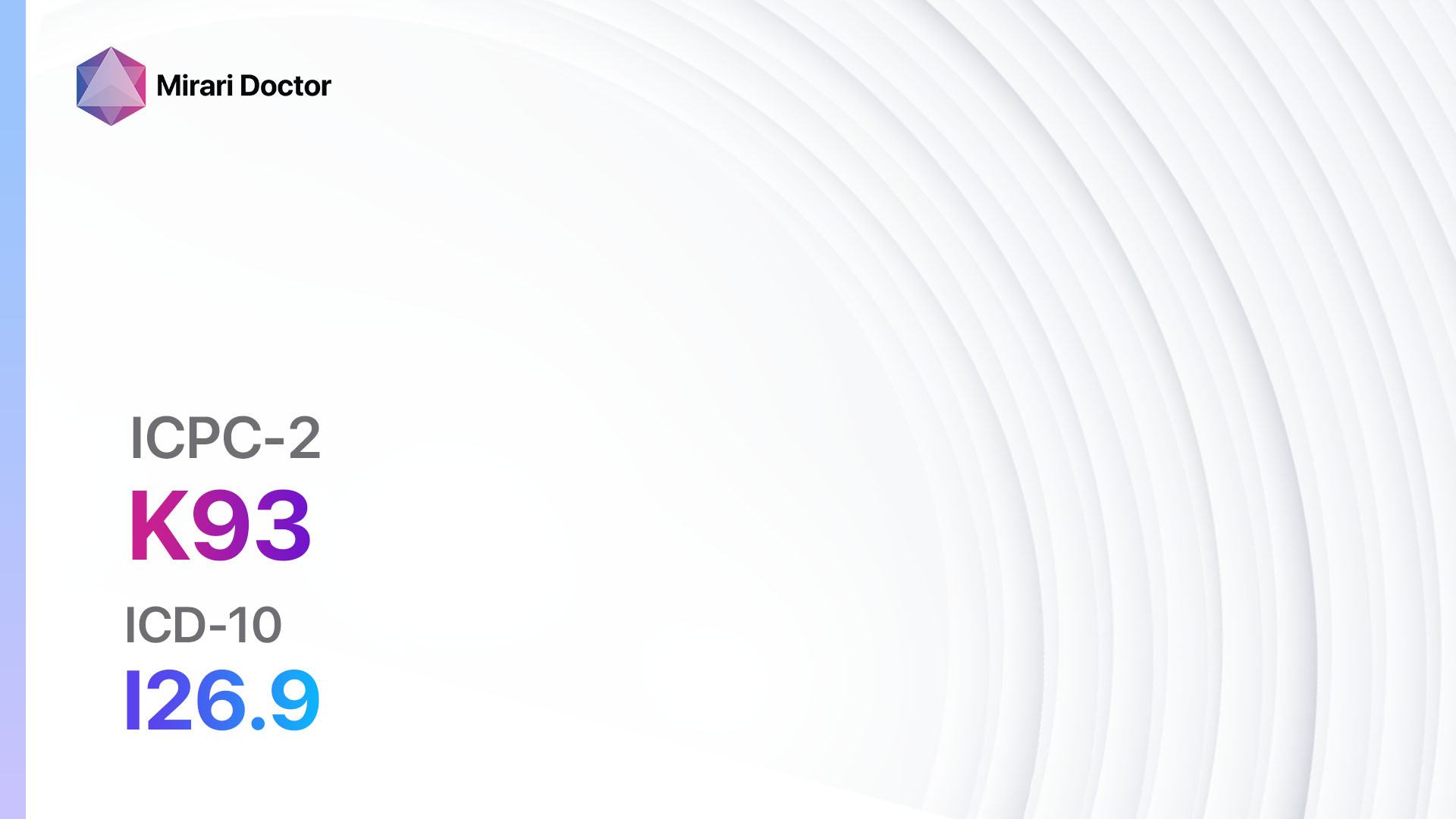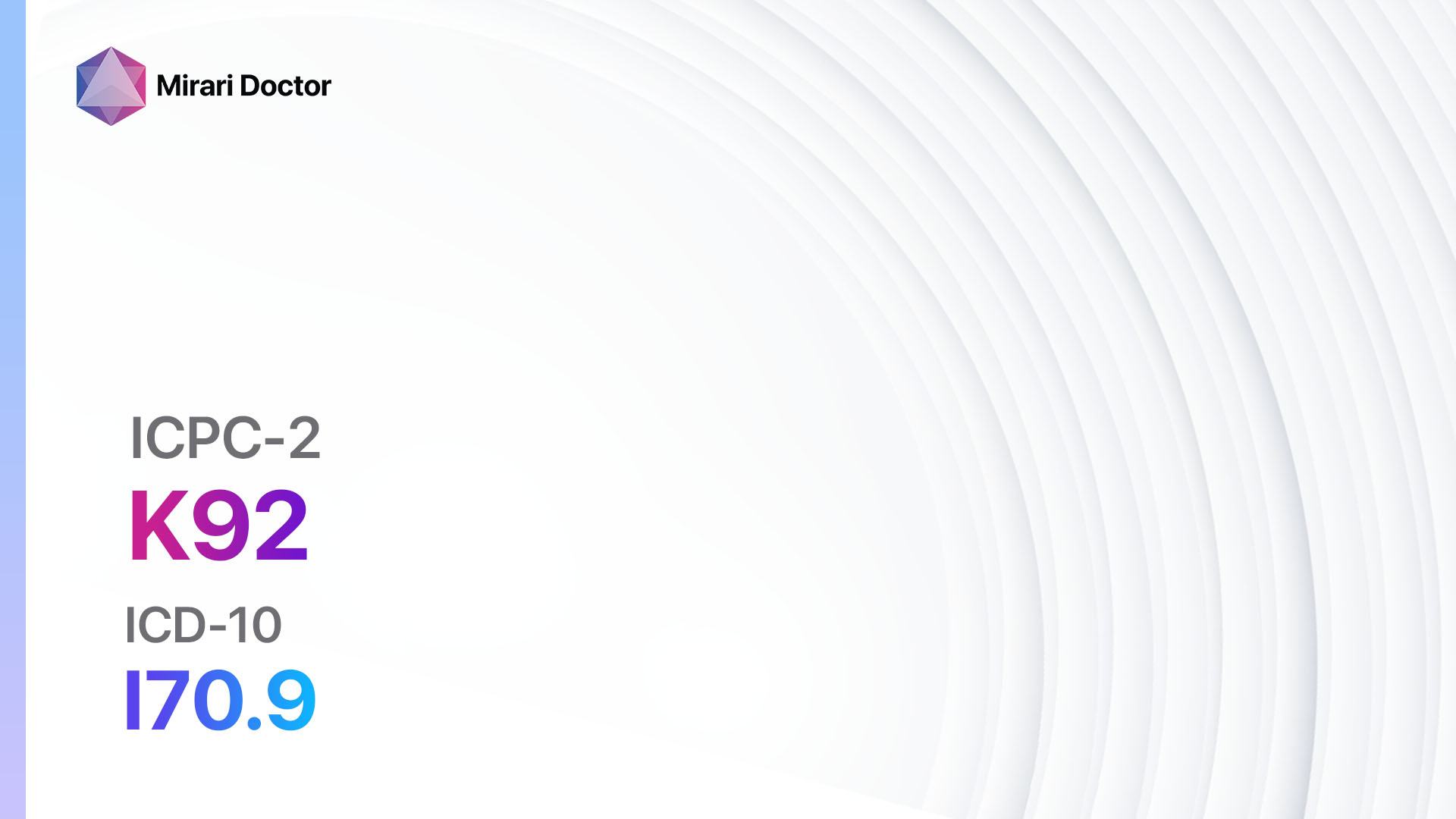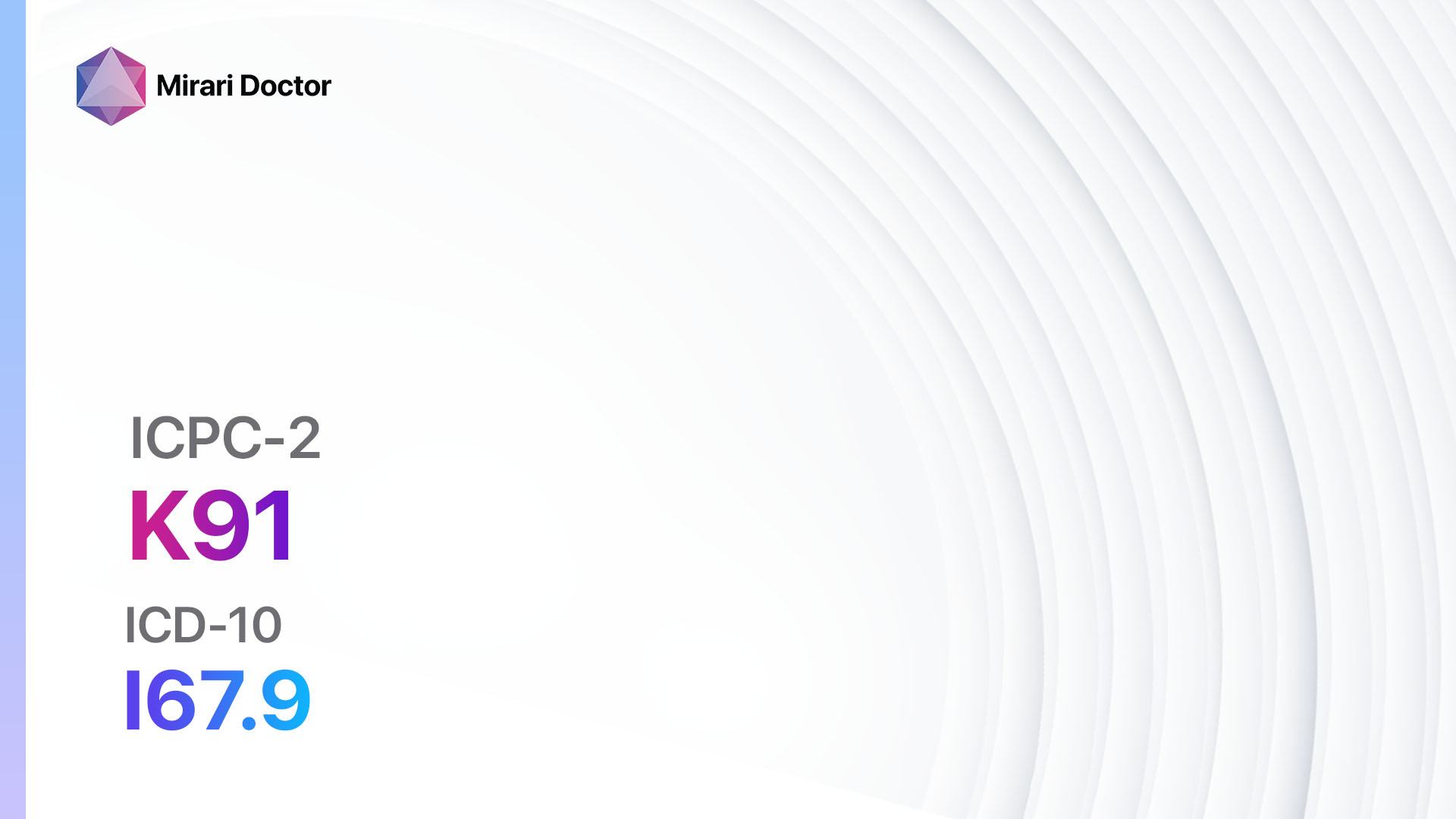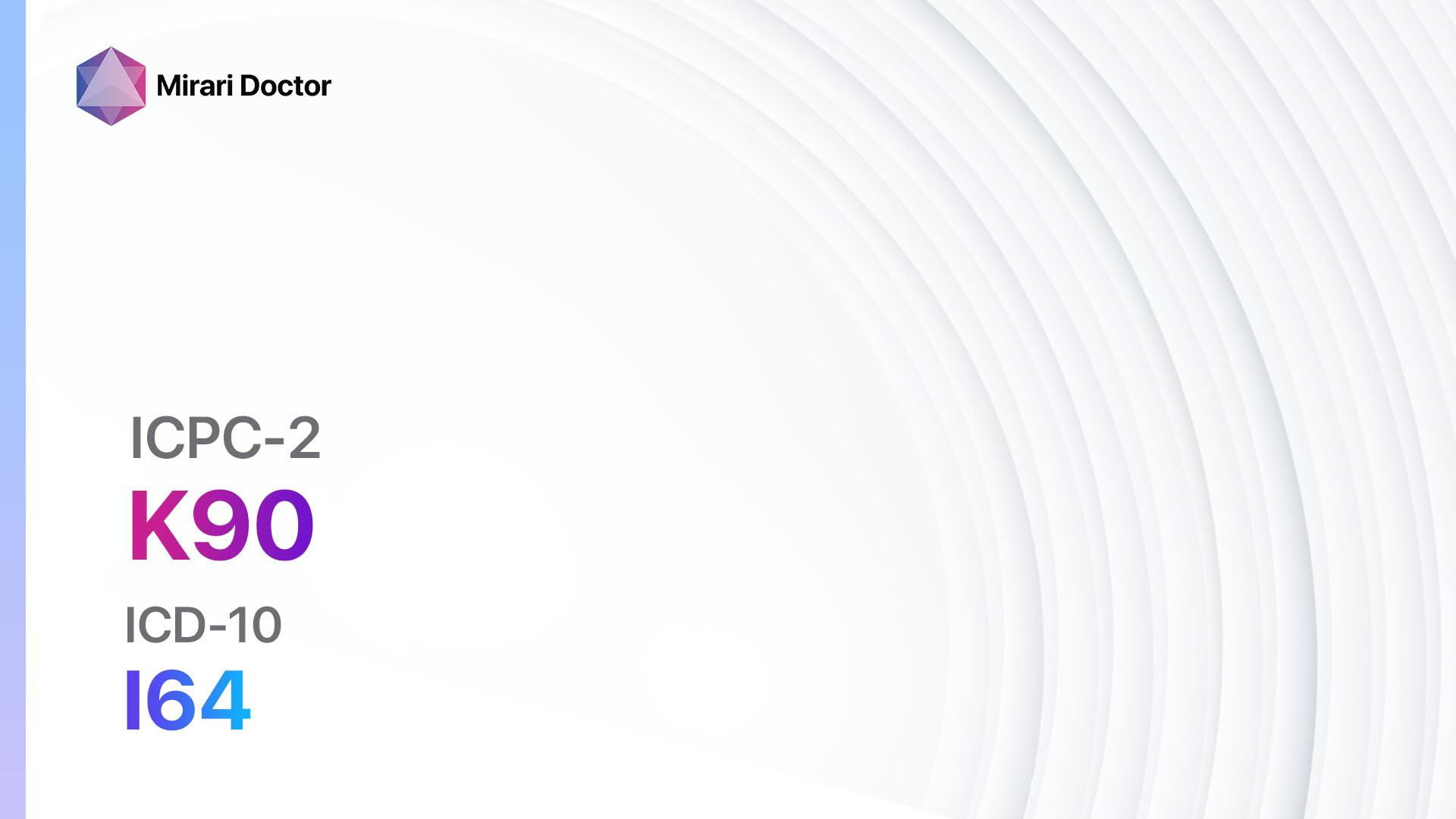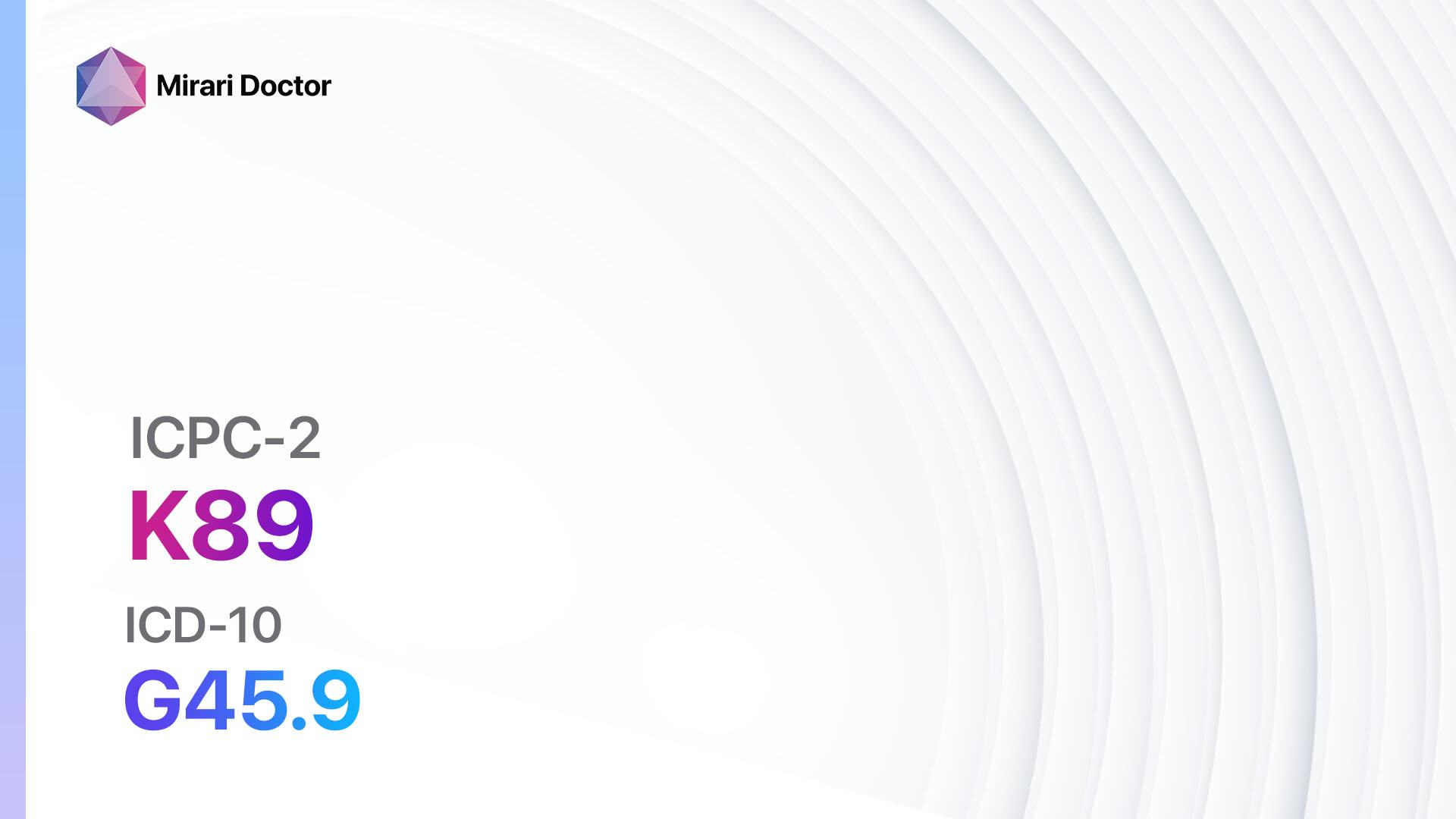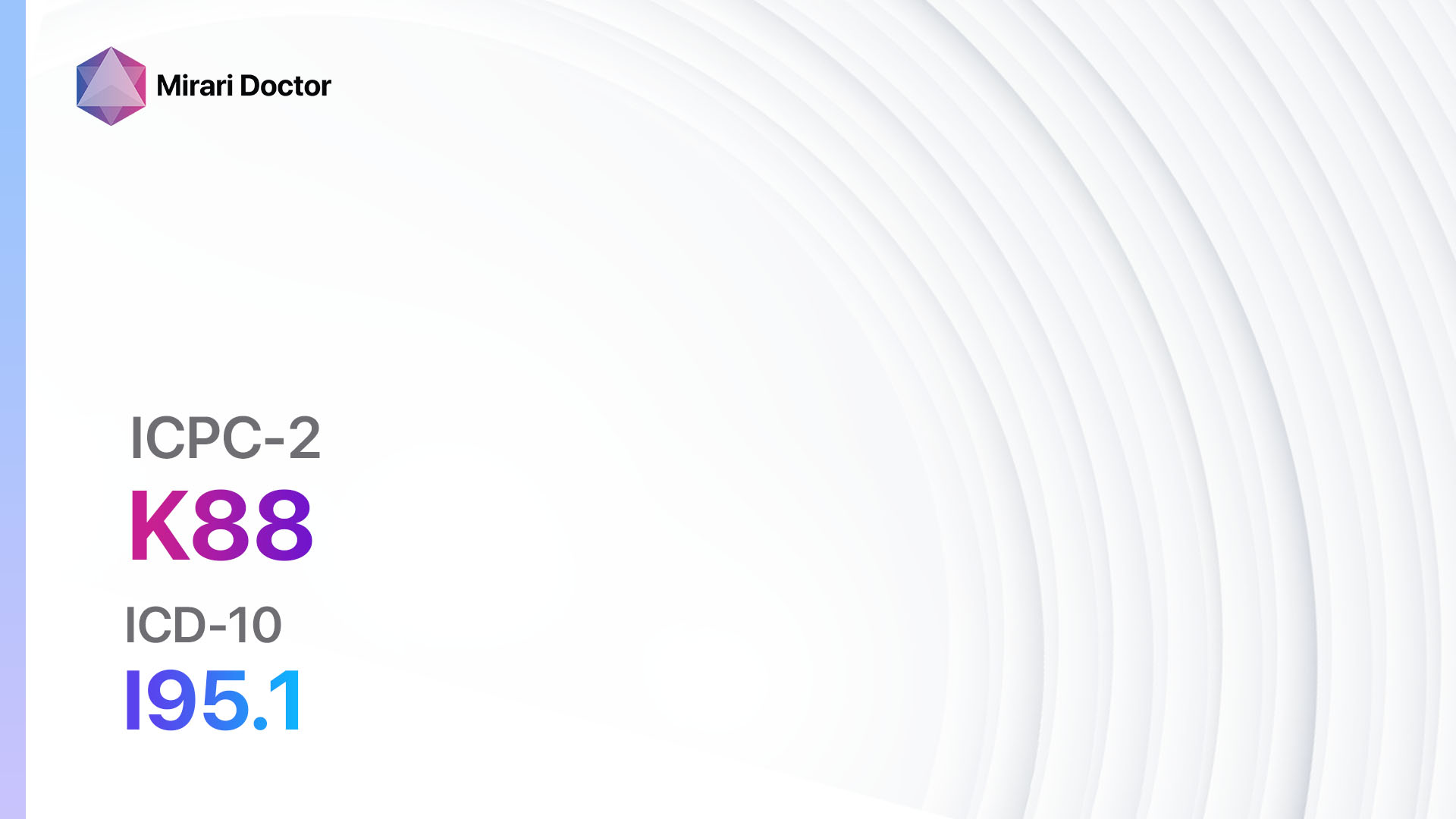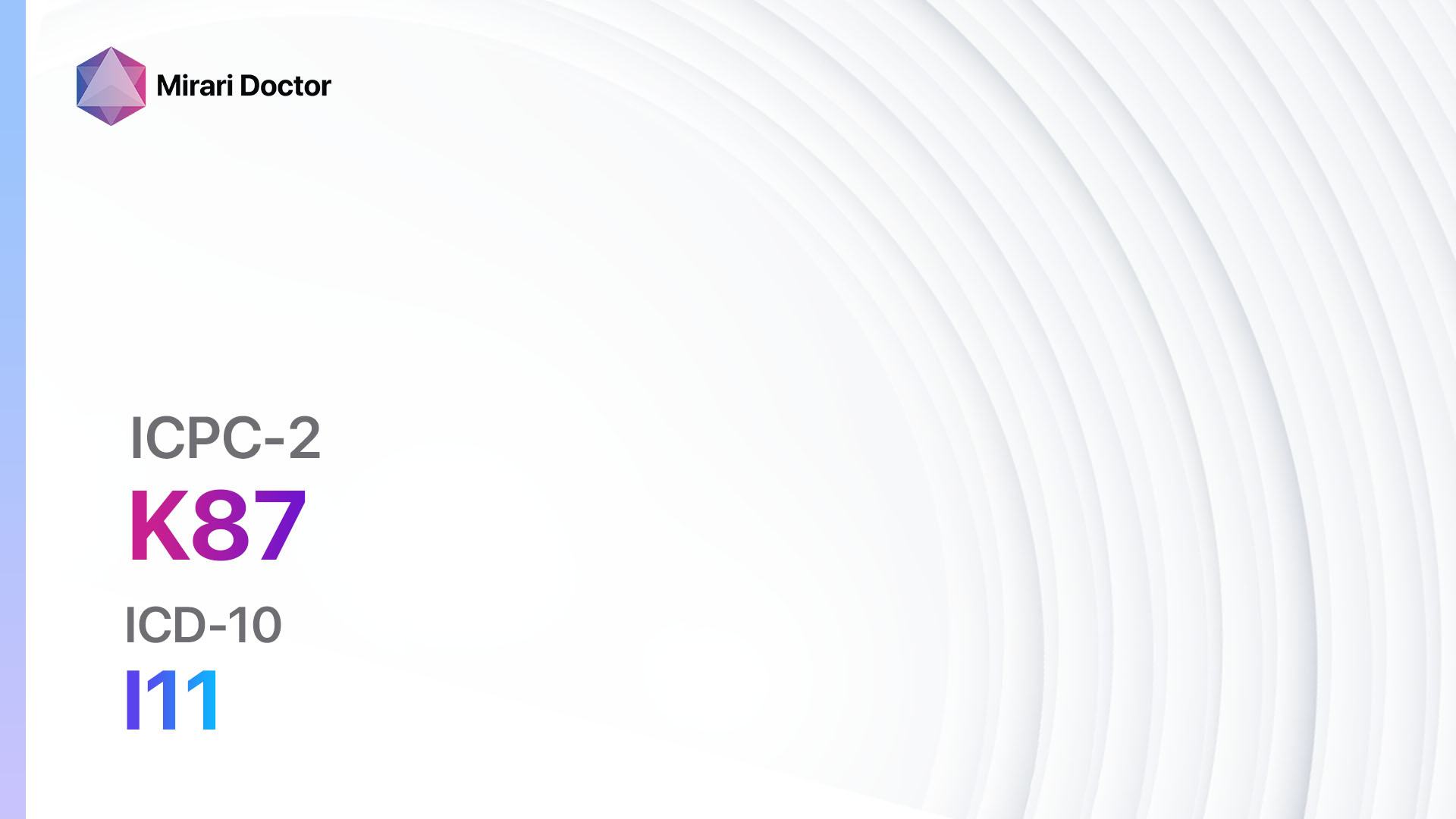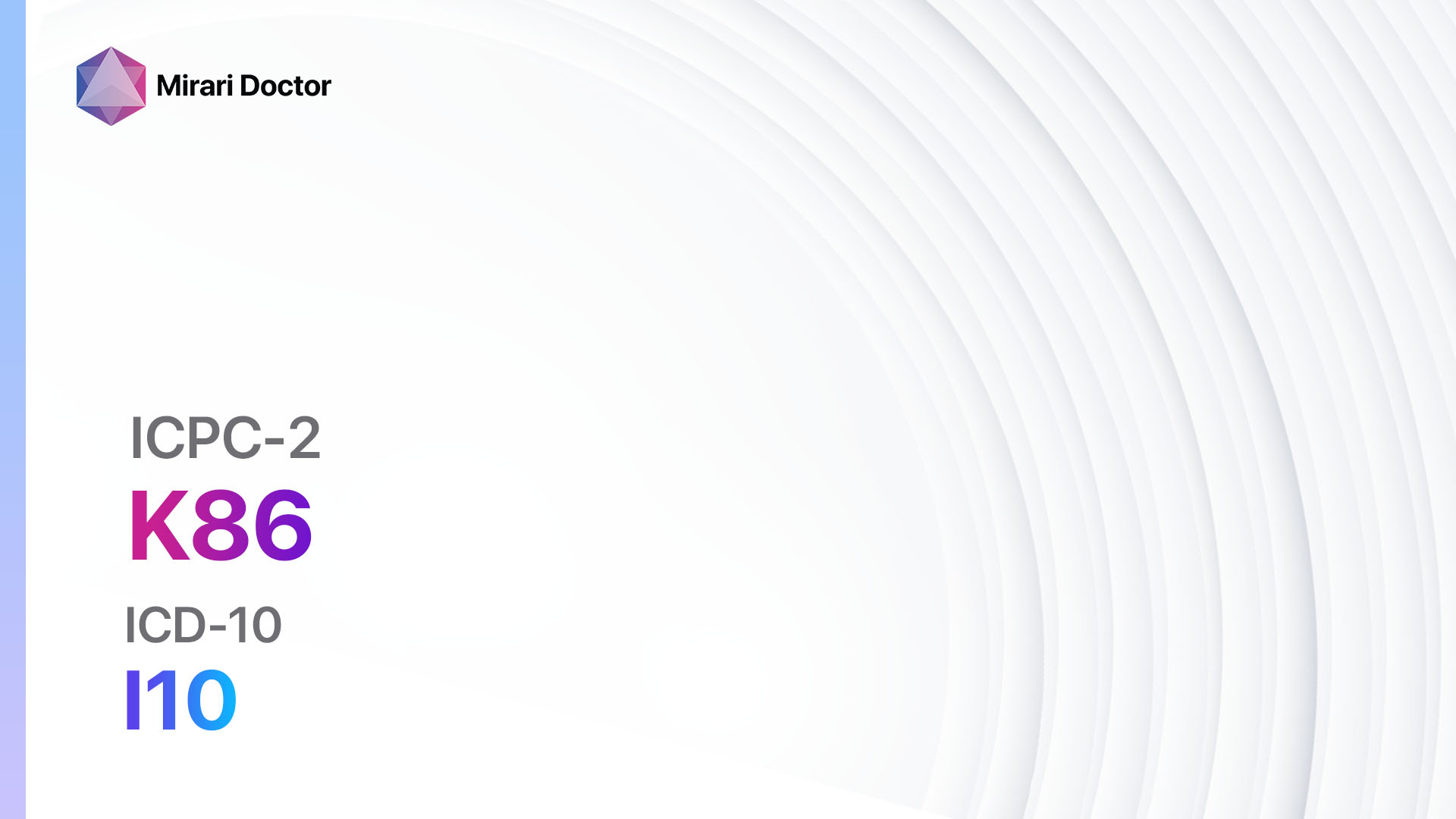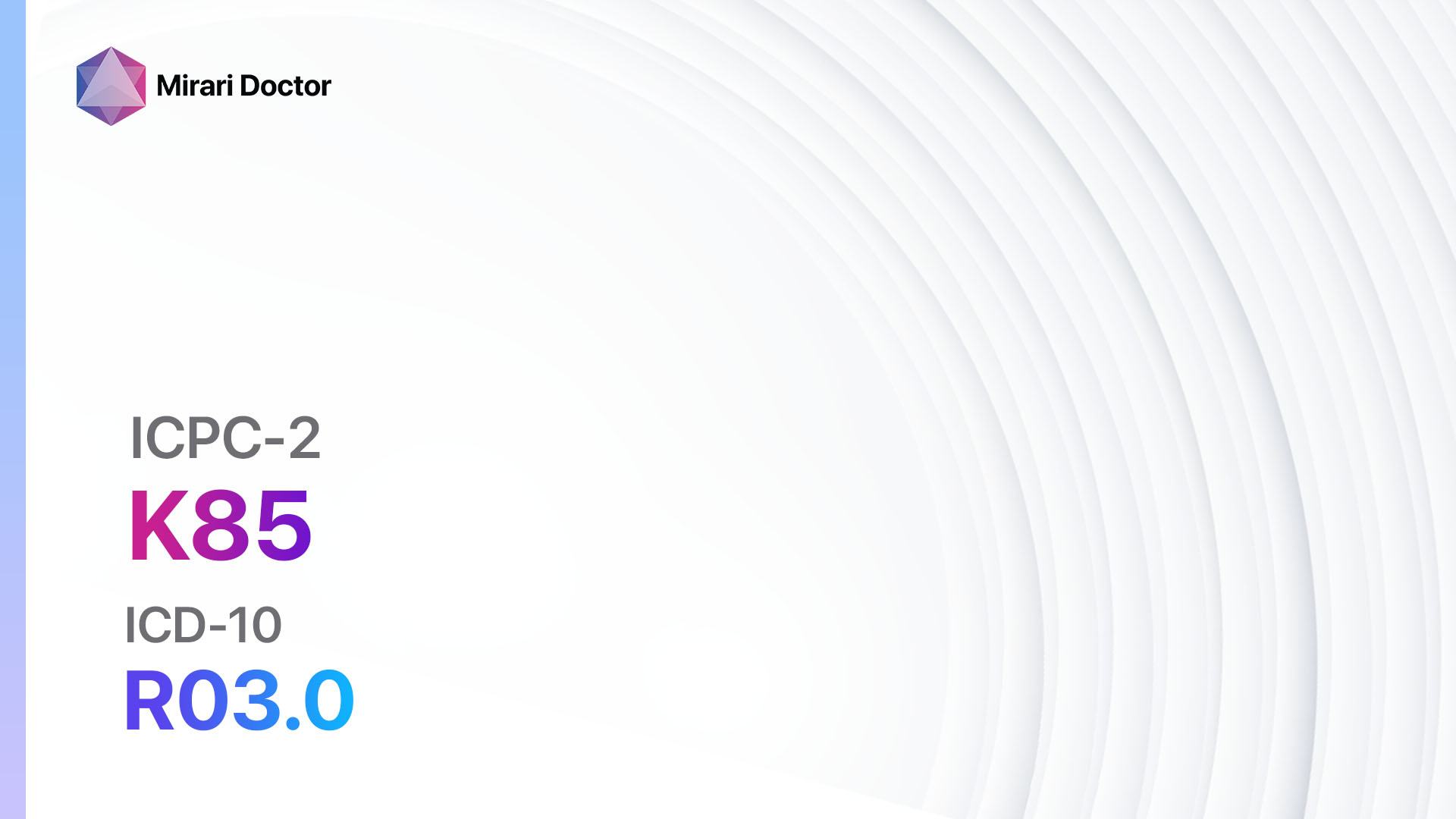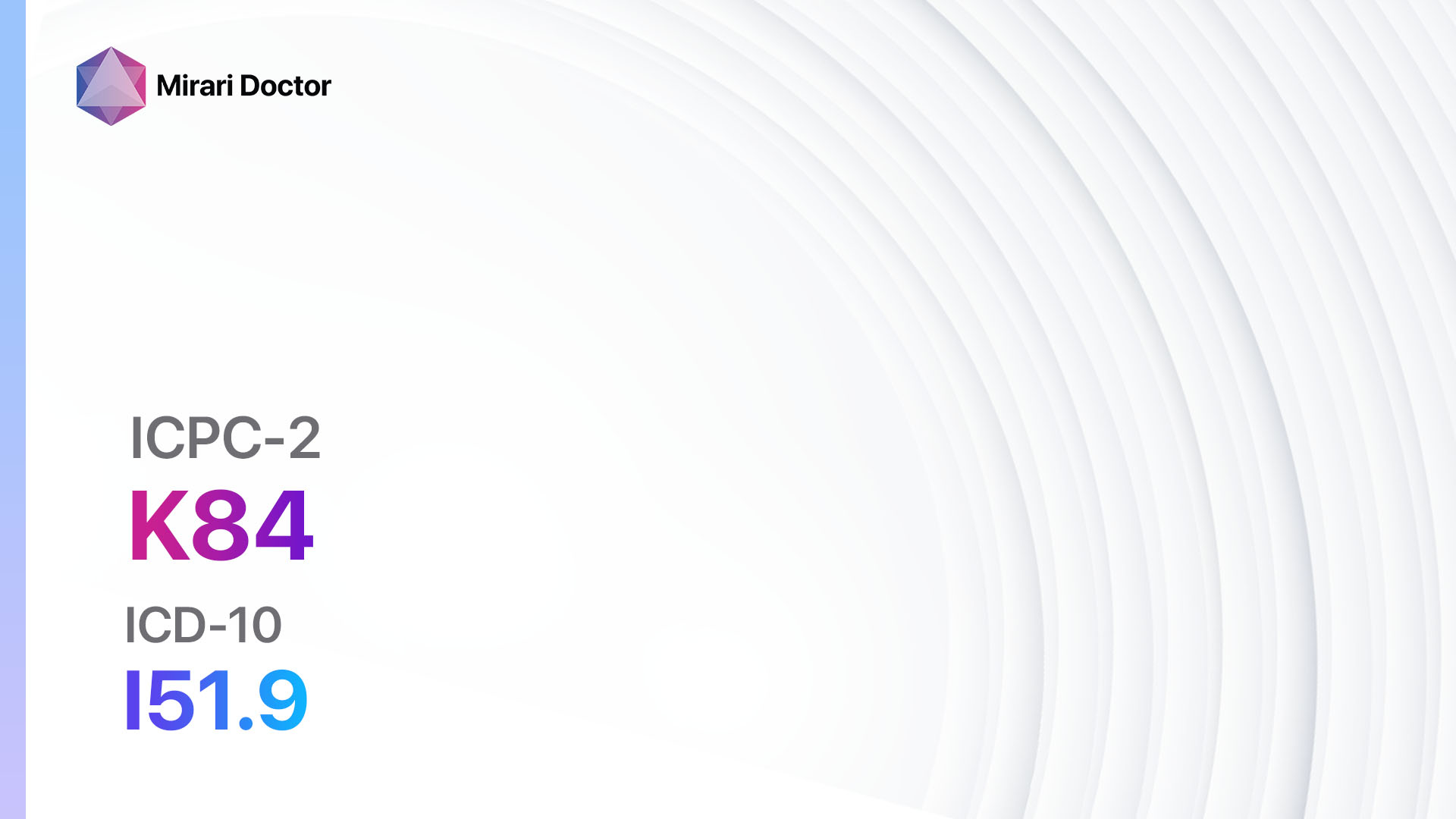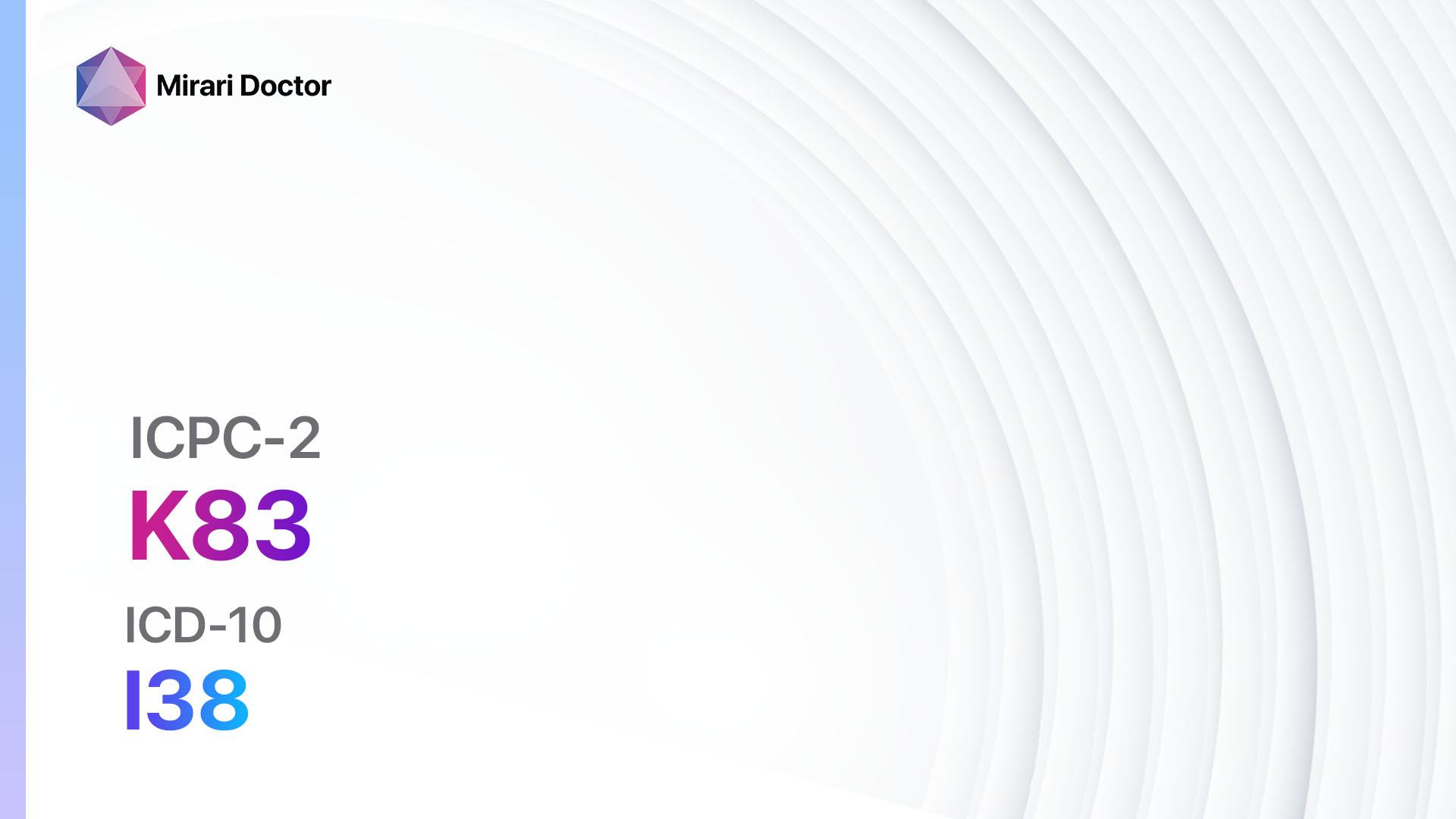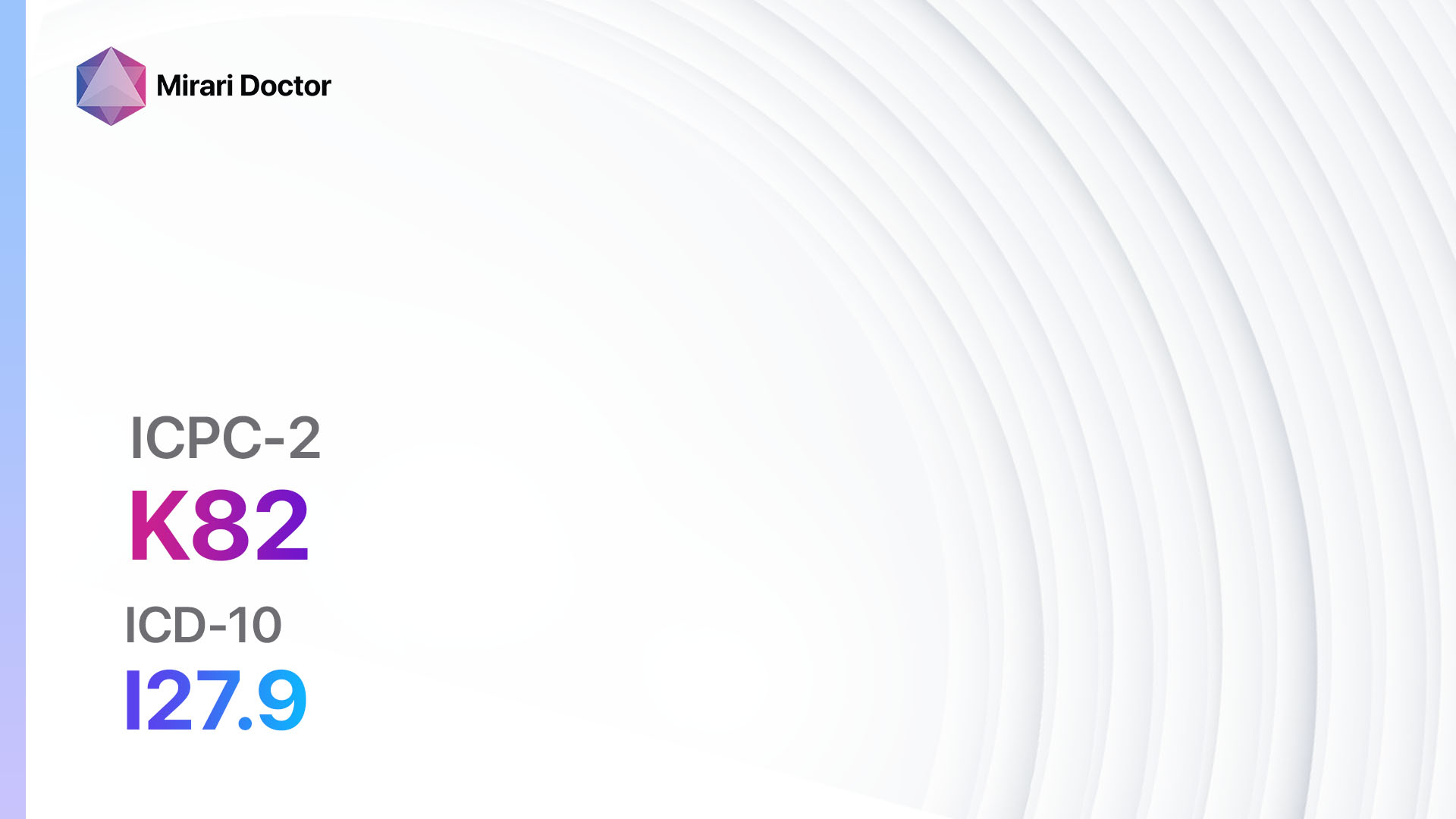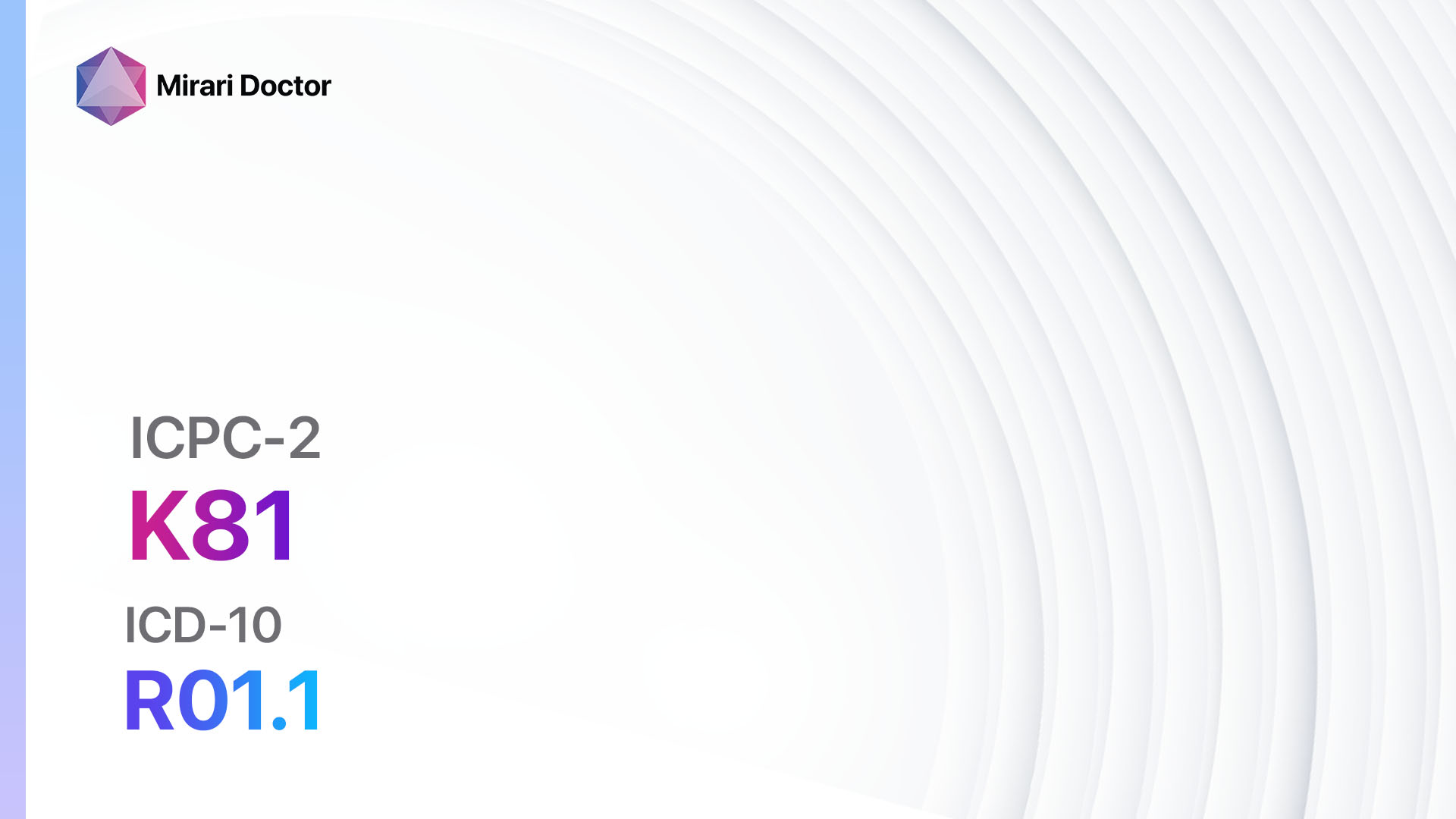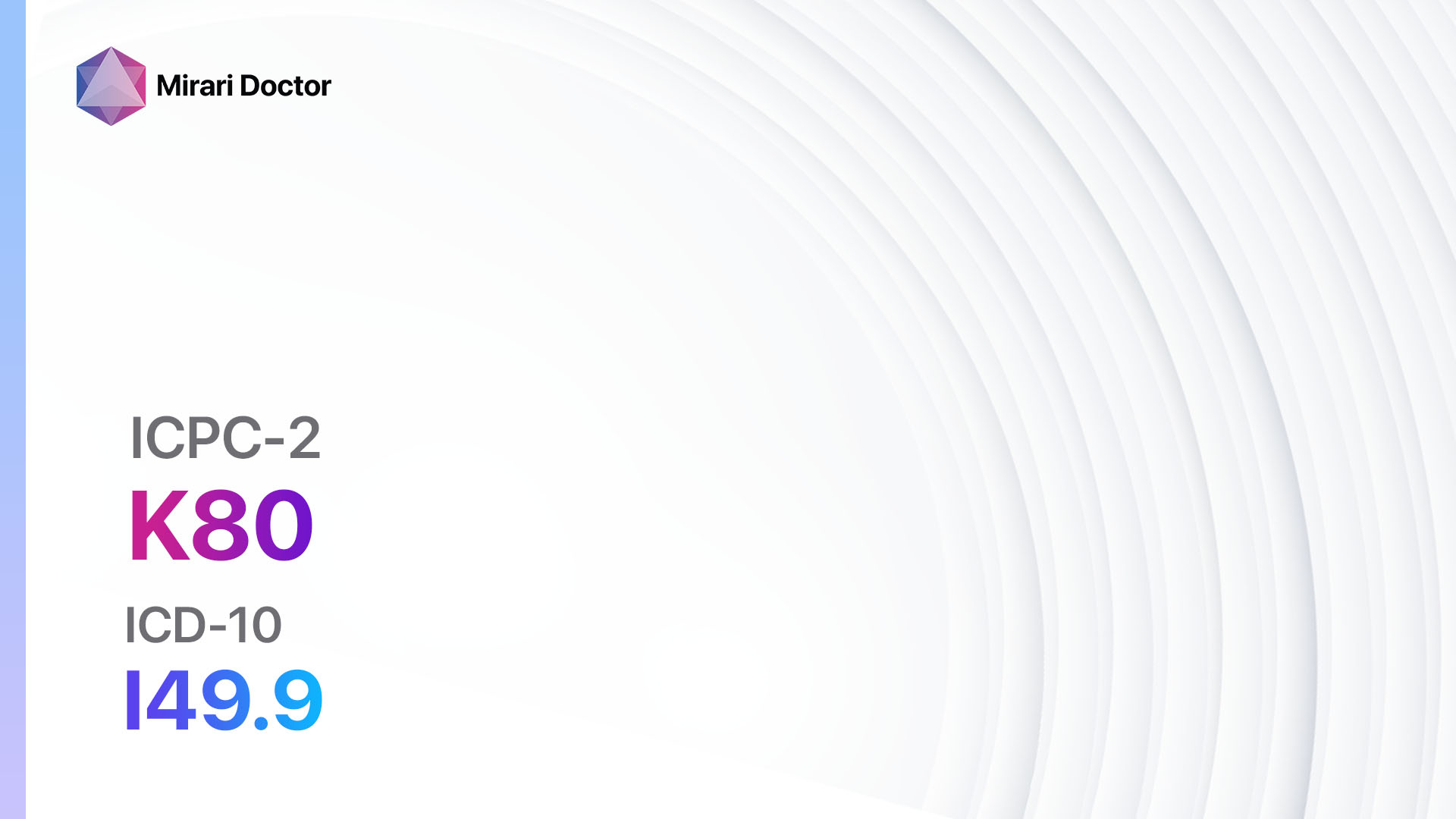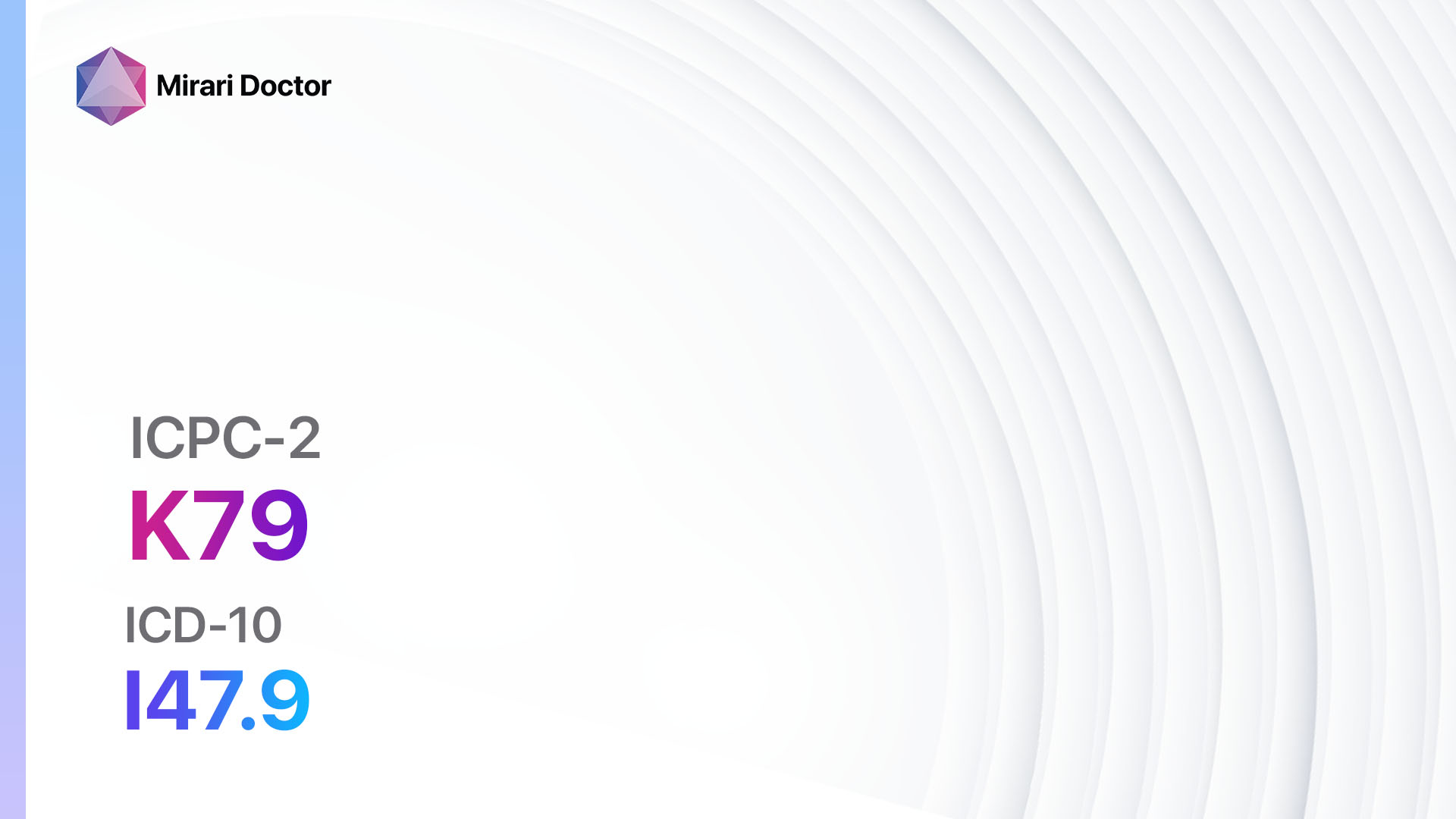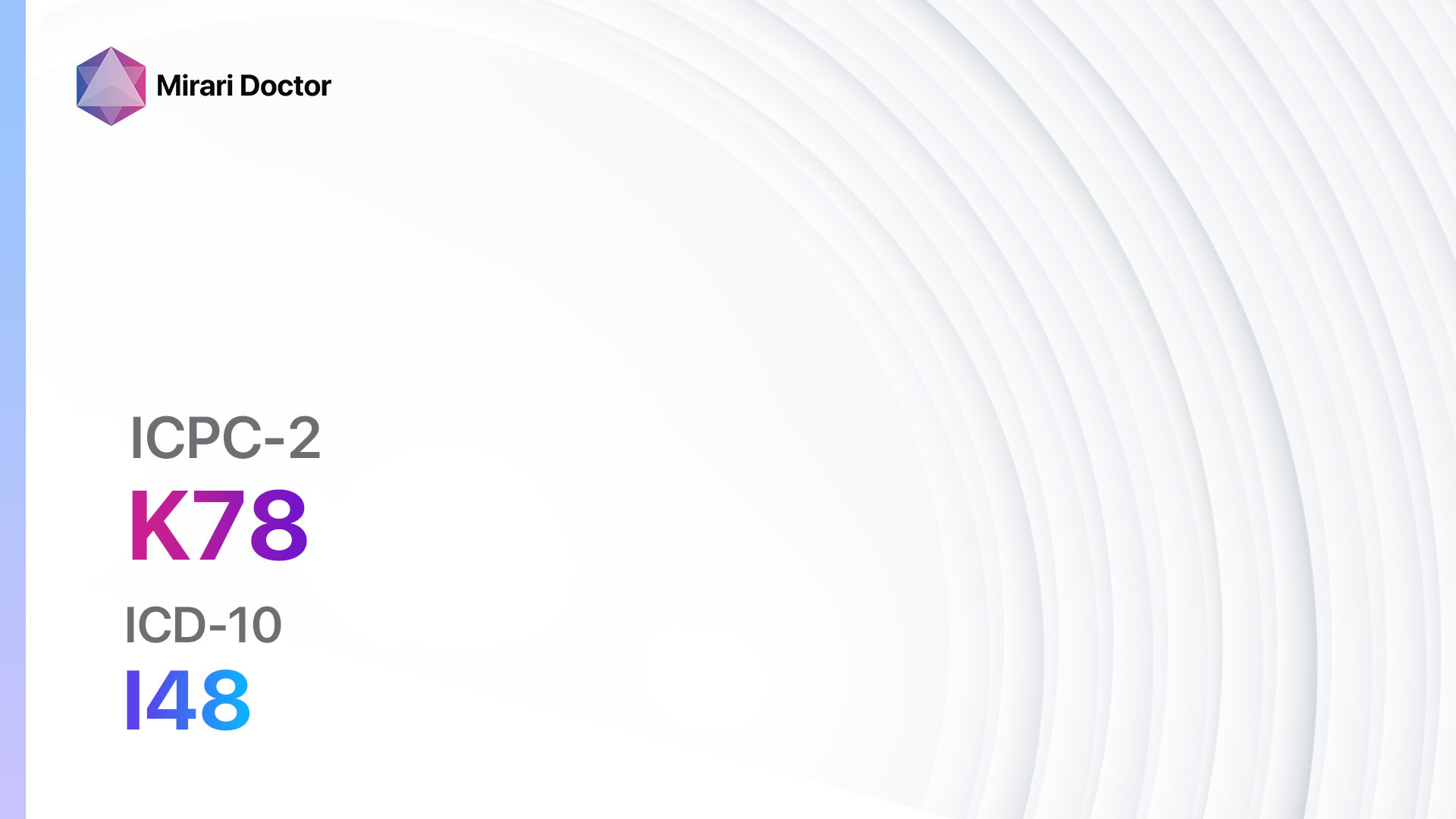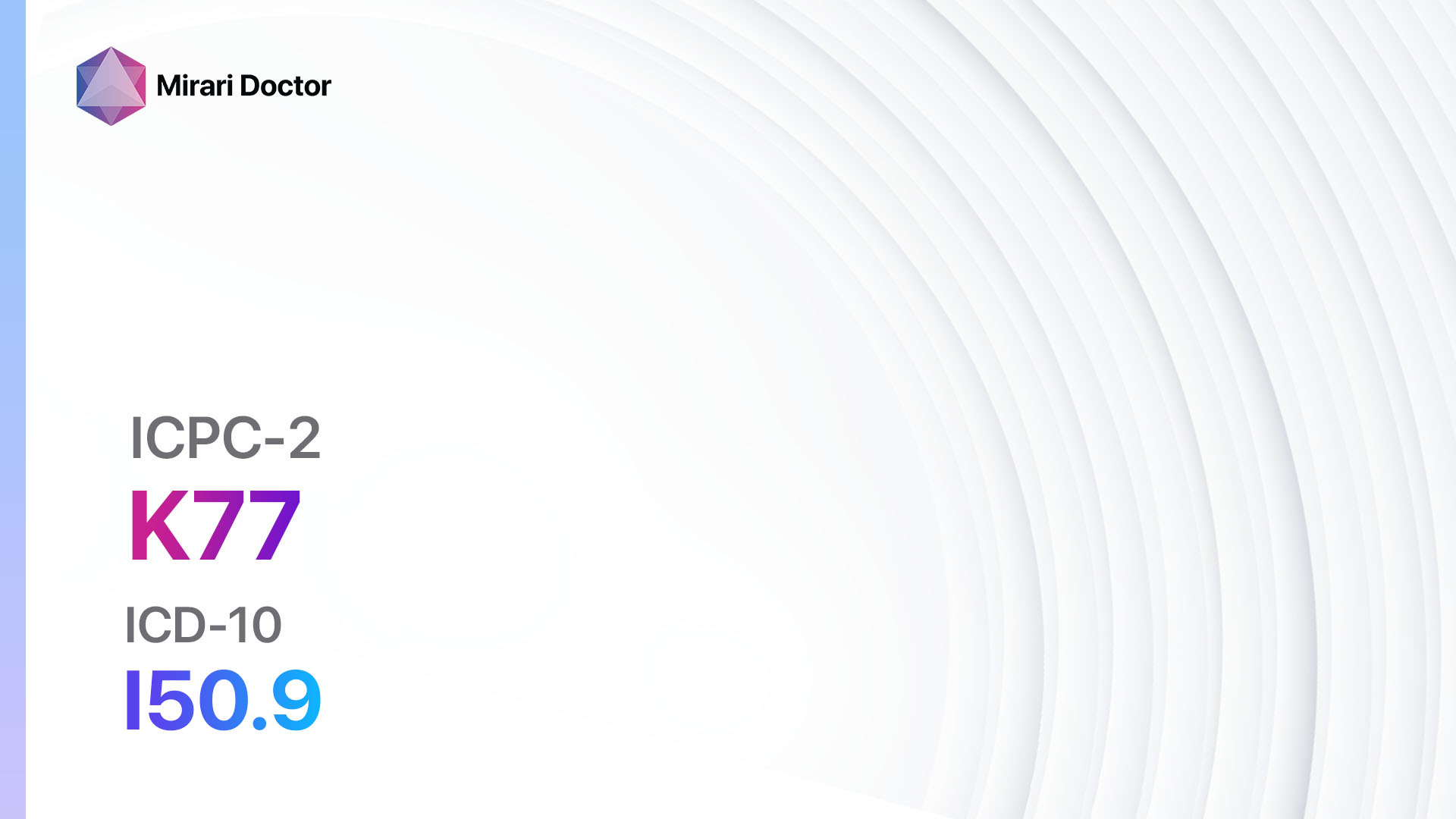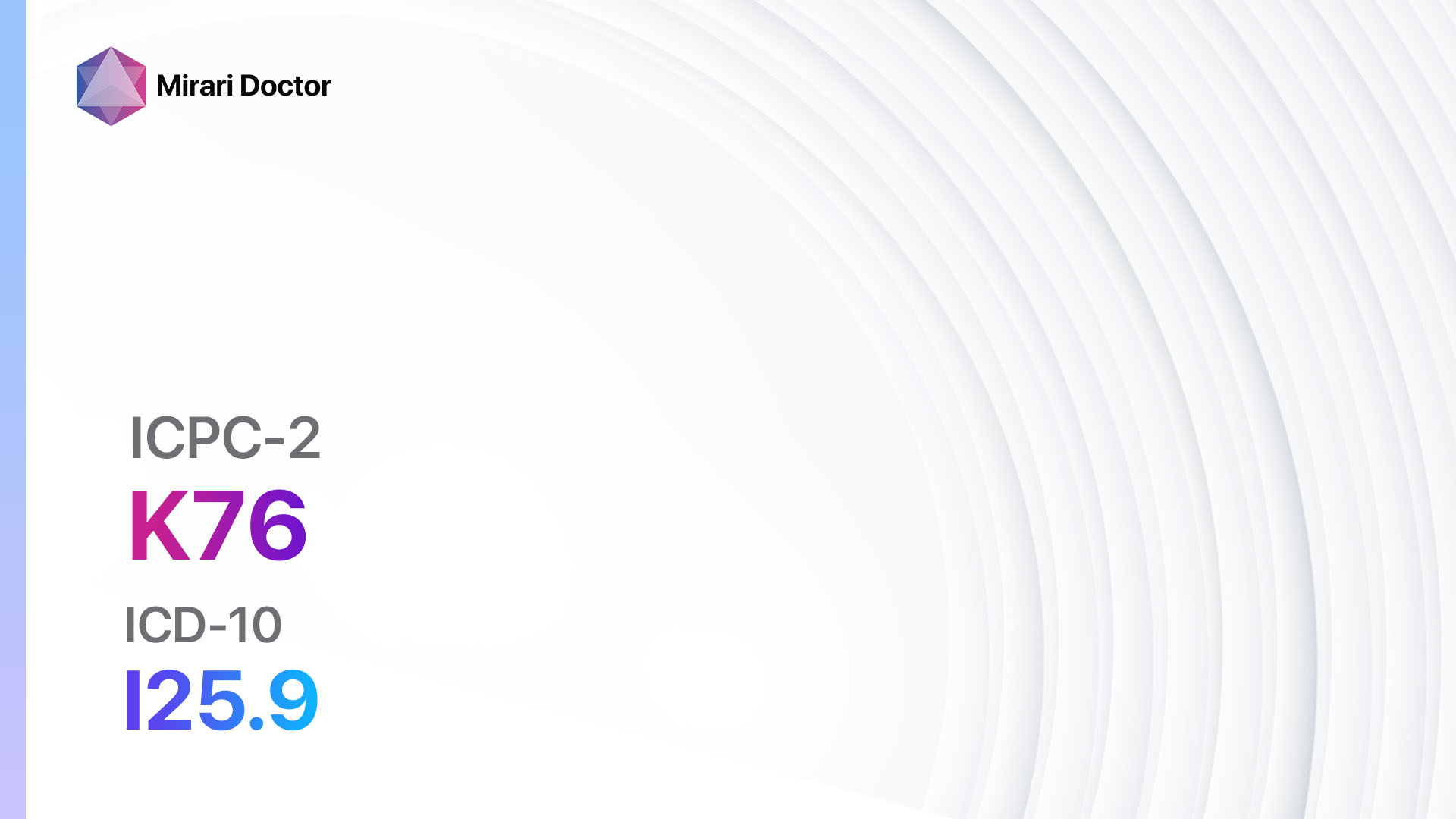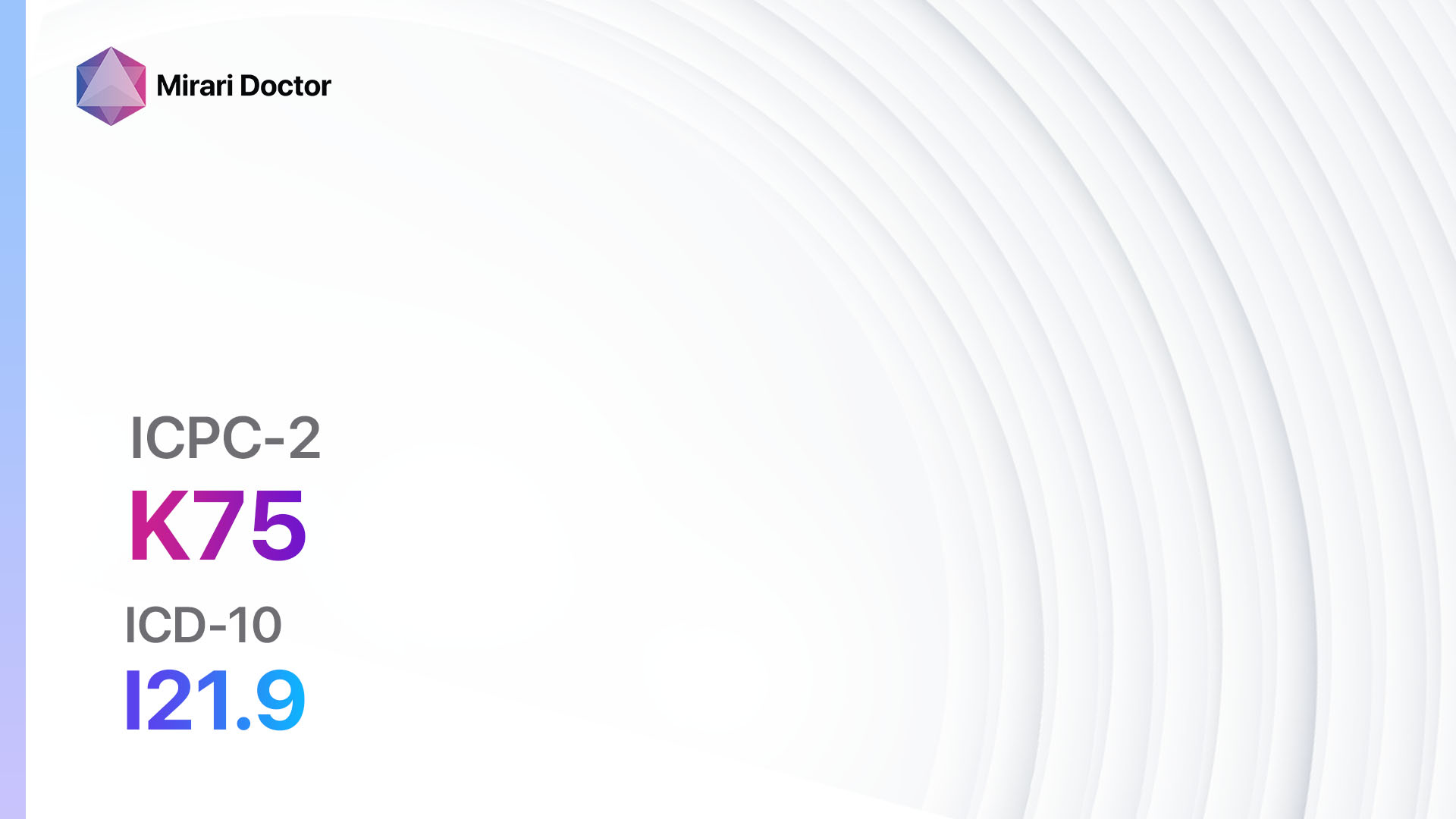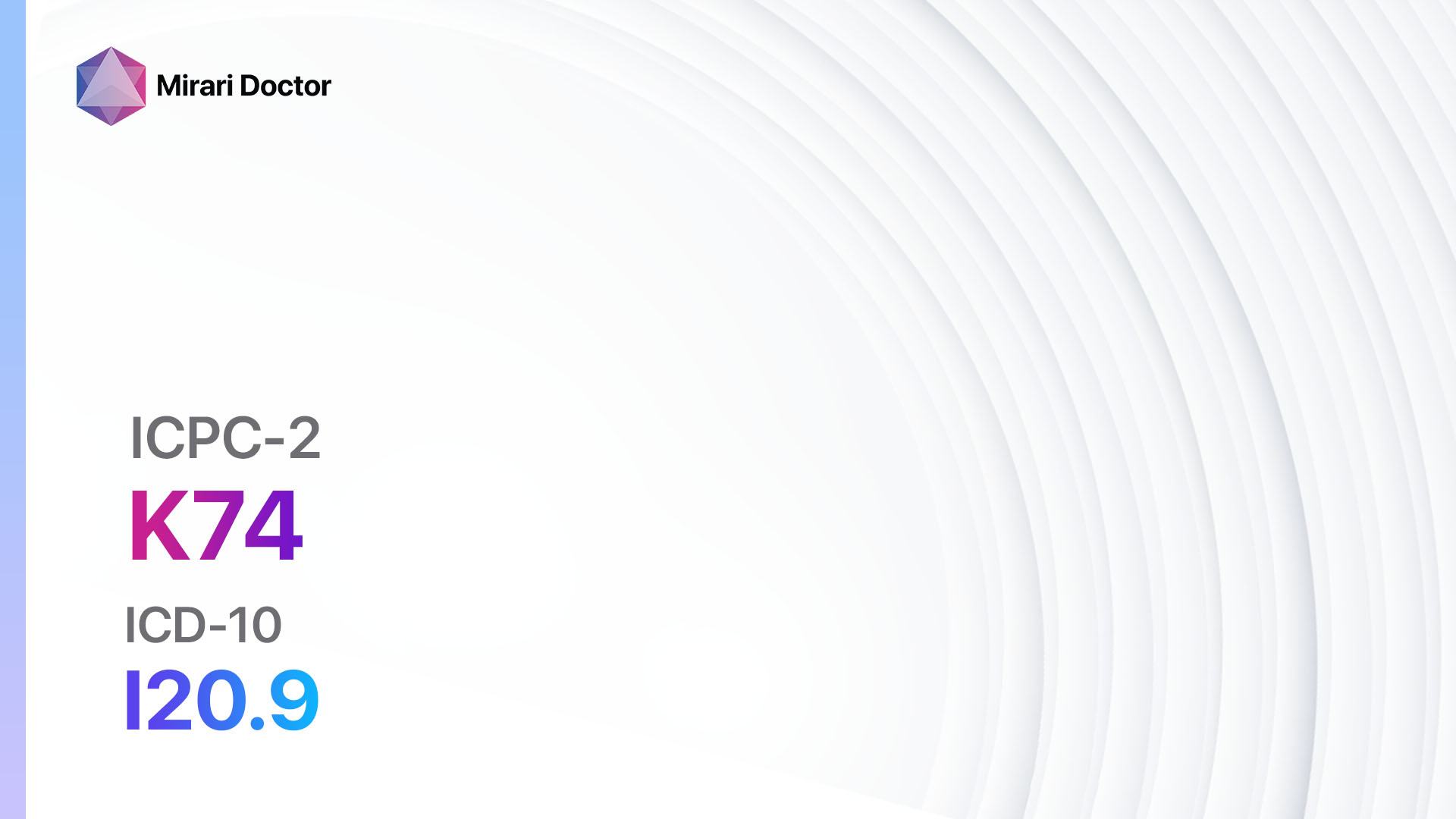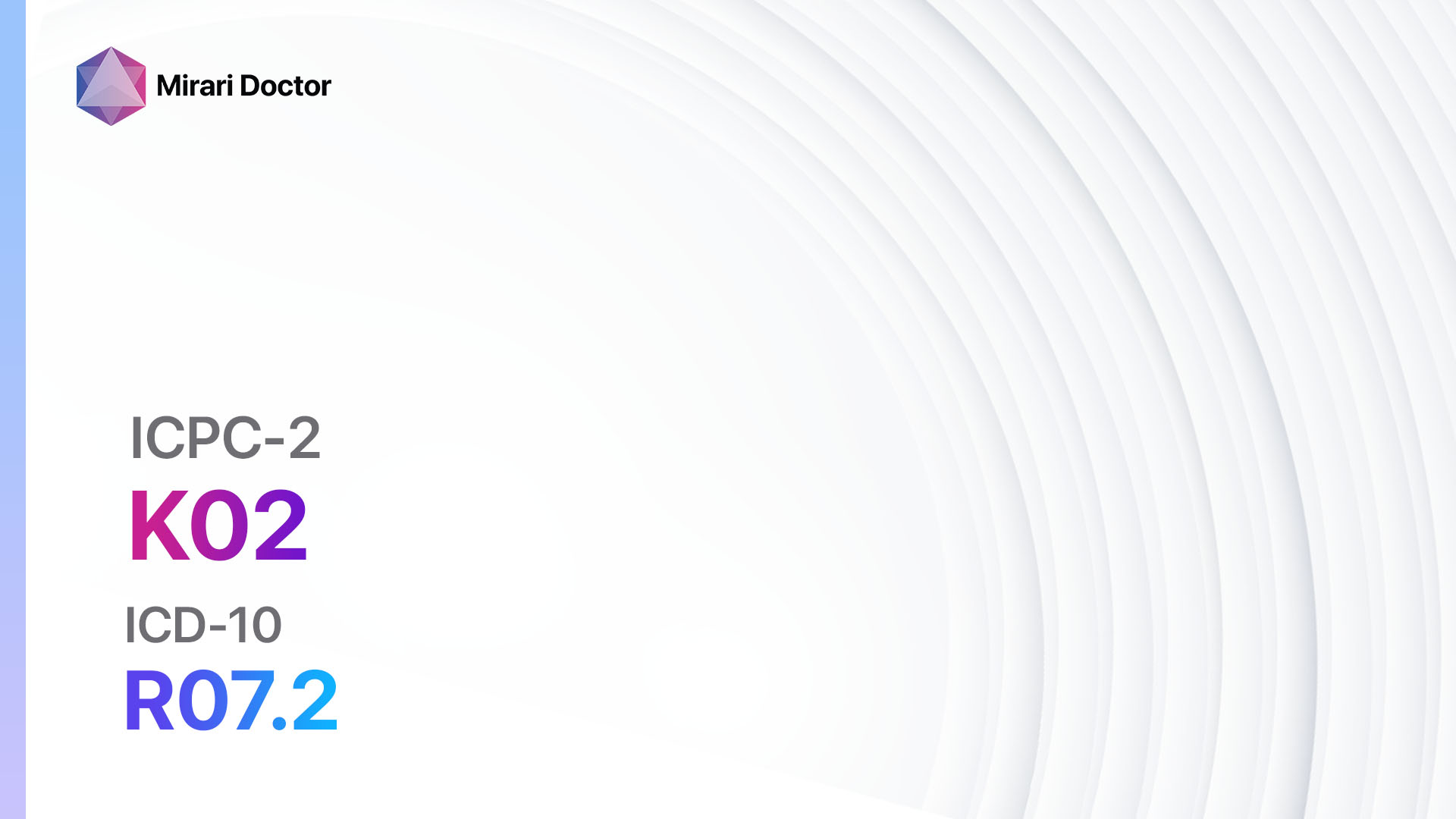
Introduction
Pressure/tightness of the heart, also known as angina, is a common symptom that can indicate underlying heart disease. It is characterized by a feeling of discomfort, heaviness, or squeezing in the chest[1]. This guide aims to provide healthcare professionals with a comprehensive approach to diagnosing and managing pressure/tightness of the heart.
Codes
Symptoms
- Chest pain or discomfort: Patients may describe a sensation of pressure, tightness, or squeezing in the chest[4].
- Pain radiating to the arms, shoulders, neck, jaw, or back: The pain may spread to other areas of the upper body[5].
- Shortness of breath: Patients may experience difficulty breathing or a feeling of breathlessness[6].
- Nausea or indigestion: Some patients may experience gastrointestinal symptoms along with chest pain[7].
- Fatigue: Patients may feel unusually tired or exhausted[8].
- Sweating: Profuse sweating may occur during an episode of chest pain[9].
Causes
- Coronary artery disease: The most common cause of pressure/tightness of the heart is atherosclerosis, which leads to narrowing of the coronary arteries[10].
- Coronary artery spasm: In some cases, the coronary arteries may go into spasm, reducing blood flow to the heart.
- Emotional stress: Stress and anxiety can trigger episodes of angina.
- Physical exertion: Activities that increase the heart’s workload, such as exercise or heavy lifting, can provoke symptoms.
- Cold weather: Exposure to cold temperatures may cause blood vessels to constrict, reducing blood flow to the heart.
Diagnostic Steps
Medical History
- Gather information about the patient’s symptoms, including the frequency, duration, and intensity of chest pain episodes.
- Assess the patient’s risk factors for coronary artery disease, such as smoking, high blood pressure, high cholesterol, diabetes, and family history of heart disease.
- Inquire about any previous heart conditions, such as heart attacks or heart failure.
- Ask about the patient’s lifestyle habits, including physical activity levels, diet, and stress levels.
Physical Examination
- Perform a thorough physical examination, including measurement of blood pressure, heart rate, and body mass index (BMI).
- Auscultate the heart to assess for any abnormal heart sounds or murmurs.
- Palpate the chest to check for tenderness or discomfort.
- Examine the extremities for signs of peripheral artery disease, such as weak pulses or cool skin.
Laboratory Tests
- Complete blood count (CBC): To assess for anemia or infection.
- Lipid profile: To measure cholesterol levels and assess the risk of atherosclerosis.
- Fasting blood glucose: To screen for diabetes, a risk factor for coronary artery disease.
- Cardiac biomarkers: Troponin levels may be elevated in cases of acute coronary syndrome.
Diagnostic Imaging
- Electrocardiogram (ECG): To evaluate the electrical activity of the heart and detect any abnormalities.
- Exercise stress test: To assess the heart’s response to physical exertion and detect any exercise-induced ischemia.
- Echocardiogram: To visualize the structure and function of the heart, including the pumping capacity and any abnormalities in the heart valves.
- Coronary angiography: A catheter is inserted into the coronary arteries to visualize any blockages or narrowing.
Other Tests
- Stress echocardiography: Combines an echocardiogram with a stress test to assess the heart’s function under stress.
- Nuclear stress test: Involves the injection of a radioactive tracer to evaluate blood flow to the heart during rest and exercise.
- CT angiography: A non-invasive imaging technique that provides detailed images of the coronary arteries.
Follow-up and Patient Education
- Schedule regular follow-up appointments to monitor the patient’s symptoms and response to treatment.
- Educate the patient about the importance of lifestyle modifications, such as quitting smoking, adopting a healthy diet, and engaging in regular physical activity.
- Provide information about medications, their indications, potential side effects, and the importance of adherence.
- Discuss the signs and symptoms of a heart attack and when to seek immediate medical attention.
Possible Interventions
Traditional Interventions
Medications:
Top 5 drugs for pressure/tightness of the heart:
- Nitroglycerin:
- Cost: Generic versions can be $10-$50 for a supply of 30 tablets.
- Contraindications: Hypersensitivity to nitroglycerin, severe anemia, increased intracranial pressure.
- Side effects: Headache, dizziness, flushing.
- Severe side effects: Severe hypotension, methemoglobinemia.
- Drug interactions: Phosphodiesterase-5 inhibitors (e.g., sildenafil), beta-blockers.
- Warning: Nitroglycerin should be stored in a cool, dark place and protected from light and moisture.
- Beta-blockers (e.g., Metoprolol, Atenolol):
- Cost: Generic versions are typically <$30/month.
- Contraindications: Severe bradycardia, heart block, uncontrolled heart failure.
- Side effects: Fatigue, dizziness, bradycardia.
- Severe side effects: Bronchospasm, heart block.
- Drug interactions: Calcium channel blockers, insulin.
- Warning: Beta-blockers should not be abruptly stopped.
- Calcium channel blockers (e.g., Amlodipine, Diltiazem):
- Cost: Generic versions can be $10-$50/month.
- Contraindications: Severe hypotension, heart block, heart failure.
- Side effects: Headache, dizziness, peripheral edema.
- Severe side effects: Bradycardia, heart block.
- Drug interactions: Beta-blockers, grapefruit juice.
- Warning: Monitoring of blood pressure and heart rate is required.
- Aspirin:
- Cost: Inexpensive (<$10/month).
- Contraindications: Active bleeding, peptic ulcer disease.
- Side effects: Upset stomach, bleeding.
- Severe side effects: Severe bleeding, allergic reactions.
- Drug interactions: NSAIDs, other blood thinners.
- Warning: Aspirin should be taken with food to minimize gastrointestinal side effects.
- Statins (e.g., Atorvastatin, Simvastatin, Rosuvastatin):
- Cost: Generic versions can be $3-$50/month.
- Contraindications: Active liver disease, hypersensitivity.
- Side effects: Muscle pain, diarrhea, upset stomach.
- Severe side effects: Rhabdomyolysis, liver damage.
- Drug interactions: Grapefruit juice, other cholesterol-lowering agents.
- Warning: Regular liver function tests are required.
Alternative Drugs:
- Angiotensin-converting enzyme (ACE) inhibitors (e.g., Ramipril, Lisinopril): Used in patients with hypertension or heart failure.
- Angiotensin receptor blockers (ARBs) (e.g., Losartan, Valsartan): Alternative to ACE inhibitors in patients who cannot tolerate them.
- Nitrates (e.g., Isosorbide dinitrate): Used for the prevention and treatment of angina.
- Calcium channel blockers (e.g., Verapamil, Nifedipine): Alternative to beta-blockers in patients with contraindications or intolerance.
- Ranolazine: A newer medication used for chronic angina.
Surgical Procedures:
- Coronary angioplasty and stent placement: A catheter is used to place a stent to open up narrowed arteries. Cost: $15,000 to $50,000.
- Coronary artery bypass surgery (CABG): Redirects blood around blocked or narrowed coronary arteries. Cost: $70,000 to $200,000.
Alternative Interventions
- Acupuncture: May help improve blood flow and reduce pain. Cost: $60-$120 per session.
- Chelation therapy: Controversial treatment involving the administration of chelating agents to remove heavy metals from the body. Cost: $75-$150 per session.
- Hyperbaric oxygen therapy: Involves breathing pure oxygen in a pressurized chamber to increase oxygen delivery to tissues. Cost: $200-$300 per session.
- Herbal supplements: Some herbs, such as garlic and ginkgo biloba, may have potential benefits for improving circulation. Cost: Varies depending on the specific supplement.
Lifestyle Interventions
- Smoking cessation: Encourage patients to quit smoking, as it is a major risk factor for heart disease. Cost: Varies depending on the method used (e.g., nicotine replacement therapy, medications, counseling).
- Healthy diet: Advise patients to follow a balanced diet low in saturated fats, cholesterol, and sodium. Cost: Varies depending on food choices and dietary preferences.
- Regular physical activity: Recommend at least 150 minutes of moderate-intensity aerobic exercise per week. Cost: Varies depending on the chosen activity (e.g., gym membership, equipment).
- Stress management: Teach stress reduction techniques, such as deep breathing exercises, meditation, or yoga. Cost: Varies depending on the chosen method (e.g., self-guided, classes).
- Weight management: Encourage patients to achieve and maintain a healthy weight through a combination of diet and exercise. Cost: Varies depending on individual needs and preferences.
It is important to note that the cost ranges provided are approximate and may vary depending on the location and availability of the interventions.
Mirari Cold Plasma Alternative Intervention
Understanding Mirari Cold Plasma
- Safe and Non-Invasive Treatment: Mirari Cold Plasma is a safe and non-invasive treatment option for various skin conditions. It does not require incisions, minimizing the risk of scarring, bleeding, or tissue damage.
- Efficient Extraction of Foreign Bodies: Mirari Cold Plasma facilitates the removal of foreign bodies from the skin by degrading and dissociating organic matter, allowing easier access and extraction.
- Pain Reduction and Comfort: Mirari Cold Plasma has a local analgesic effect, providing pain relief during the treatment, making it more comfortable for the patient.
- Reduced Risk of Infection: Mirari Cold Plasma has antimicrobial properties, effectively killing bacteria and reducing the risk of infection.
- Accelerated Healing and Minimal Scarring: Mirari Cold Plasma stimulates wound healing and tissue regeneration, reducing healing time and minimizing the formation of scars.
Mirari Cold Plasma Prescription
Video instructions for using Mirari Cold Plasma Device – K02 Pressure/tightness of heart (ICD-10:R07.2)
| Mild | Moderate | Severe |
| Mode setting: 1 (Infection) Location: 5 (Lungs) Morning: 15 minutes, Evening: 15 minutes |
Mode setting: 1 (Infection) Location: 5 (Lungs) Morning: 30 minutes, Lunch: 30 minutes, Evening: 30 minutes |
Mode setting: 1 (Infection) Location: 5 (Lungs) Morning: 30 minutes, Lunch: 30 minutes, Evening: 30 minutes |
| Mode setting: 2 (Wound Healing) Location: 5 (Lungs) Morning: 15 minutes, Evening: 15 minutes |
Mode setting: 2 (Wound Healing) Location: 5 (Lungs) Morning: 30 minutes, Lunch: 30 minutes, Evening: 30 minutes |
Mode setting: 2 (Wound Healing) Location: 5 (Lungs) Morning: 30 minutes, Lunch: 30 minutes, Evening: 30 minutes |
| Mode setting: 3 (Antiviral Therapy) Location: 0 (Localized) Morning: 15 minutes, Evening: 15 minutes |
Mode setting: 3 (Antiviral Therapy) Location: 0 (Localized) Morning: 30 minutes, Lunch: 30 minutes, Evening: 30 minutes |
Mode setting: 3 (Antiviral Therapy) Location: 0 (Localized) Morning: 30 minutes, Lunch: 30 minutes, Evening: 30 minutes |
| Mode setting: 7 (Immunotherapy) Location: 4 (Heart, Bile & Pancreas) Morning: 15 minutes, Evening: 15 minutes |
Mode setting: 7 (Immunotherapy) Location: 4 (Heart, Bile & Pancreas) Morning: 30 minutes, Lunch: 30 minutes, Evening: 30 minutes |
Mode setting:7 (Immunotherapy) Location: 4 (Heart, Bile & Pancreas) Morning: 30 minutes, Lunch: 30 minutes, Evening: 30 minutes |
| Total Morning: 60 minutes approx. $10 USD, Evening: 60 minutes approx. $10 USD |
Total Morning: 120 minutes approx. $20 USD, Lunch: 120 minutes approx. $20 USD, Evening: 120 minutes approx. $20 USD, |
Total Morning: 120 minutes approx. $20 USD, Lunch: 120 minutes approx. $20 USD, Evening: 120 minutes approx. $20 USD, |
| Usual treatment for 7-60 days approx. $140 USD – $1200 USD | Usual treatment for 6-8 weeks approx. $2,520 USD – $3,360 USD |
Usual treatment for 3-6 months approx. $5,400 USD – $10,800 USD
|
 |
|
Use the Mirari Cold Plasma device to treat Pressure/tightness of heart effectively.
WARNING: MIRARI COLD PLASMA IS DESIGNED FOR THE HUMAN BODY WITHOUT ANY ARTIFICIAL OR THIRD PARTY PRODUCTS. USE OF OTHER PRODUCTS IN COMBINATION WITH MIRARI COLD PLASMA MAY CAUSE UNPREDICTABLE EFFECTS, HARM OR INJURY. PLEASE CONSULT A MEDICAL PROFESSIONAL BEFORE COMBINING ANY OTHER PRODUCTS WITH USE OF MIRARI.
Step 1: Cleanse the Skin
- Start by cleaning the affected area of the skin with a gentle cleanser or mild soap and water. Gently pat the area dry with a clean towel.
Step 2: Prepare the Mirari Cold Plasma device
- Ensure that the Mirari Cold Plasma device is fully charged or has fresh batteries as per the manufacturer’s instructions. Make sure the device is clean and in good working condition.
- Switch on the Mirari device using the power button or by following the specific instructions provided with the device.
- Some Mirari devices may have adjustable settings for intensity or treatment duration. Follow the manufacturer’s instructions to select the appropriate settings based on your needs and the recommended guidelines.
Step 3: Apply the Device
- Place the Mirari device in direct contact with the affected area of the skin. Gently glide or hold the device over the skin surface, ensuring even coverage of the area experiencing.
- Slowly move the Mirari device in a circular motion or follow a specific pattern as indicated in the user manual. This helps ensure thorough treatment coverage.
Step 4: Monitor and Assess:
- Keep track of your progress and evaluate the effectiveness of the Mirari device in managing your Pressure/tightness of heart. If you have any concerns or notice any adverse reactions, consult with your health care professional.
Note
This guide is for informational purposes only and should not replace the advice of a medical professional. Always consult with your healthcare provider or a qualified medical professional for personal advice, diagnosis, or treatment. Do not solely rely on the information presented here for decisions about your health. Use of this information is at your own risk. The authors of this guide, nor any associated entities or platforms, are not responsible for any potential adverse effects or outcomes based on the content.
Mirari Cold Plasma System Disclaimer
- Purpose: The Mirari Cold Plasma System is a Class 2 medical device designed for use by trained healthcare professionals. It is registered for use in Thailand and Vietnam. It is not intended for use outside of these locations.
- Informational Use: The content and information provided with the device are for educational and informational purposes only. They are not a substitute for professional medical advice or care.
- Variable Outcomes: While the device is approved for specific uses, individual outcomes can differ. We do not assert or guarantee specific medical outcomes.
- Consultation: Prior to utilizing the device or making decisions based on its content, it is essential to consult with a Certified Mirari Tele-Therapist and your medical healthcare provider regarding specific protocols.
- Liability: By using this device, users are acknowledging and accepting all potential risks. Neither the manufacturer nor the distributor will be held accountable for any adverse reactions, injuries, or damages stemming from its use.
- Geographical Availability: This device has received approval for designated purposes by the Thai and Vietnam FDA. As of now, outside of Thailand and Vietnam, the Mirari Cold Plasma System is not available for purchase or use.
References
- Fihn SD, Gardin JM, Abrams J, et al. 2012 ACCF/AHA/ACP/AATS/PCNA/SCAI/STS guideline for the diagnosis and management of patients with stable ischemic heart disease. J Am Coll Cardiol. 2012;60(24):e44-e164.
- WONCA International Classification Committee. ICPC-2: International Classification of Primary Care. 2nd ed. Oxford: Oxford University Press; 1998.
- World Health Organization. International Statistical Classification of Diseases and Related Health Problems 10th Revision. World Health Organization; 2019.
- Swap CJ, Nagurney JT. Value and limitations of chest pain history in the evaluation of patients with suspected acute coronary syndromes. JAMA. 2005;294(20):2623-2629.
- Brieger D, Eagle KA, Goodman SG, et al. Acute coronary syndromes without chest pain, an underdiagnosed and undertreated high-risk group: insights from the Global Registry of Acute Coronary Events. Chest. 2004;126(2):461-469.
- Abidov A, Rozanski A, Hachamovitch R, et al. Prognostic significance of dyspnea in patients referred for cardiac stress testing. N Engl J Med. 2005;353(18):1889-1898.
- Canto JG, Shlipak MG, Rogers WJ, et al. Prevalence, clinical characteristics, and mortality among patients with myocardial infarction presenting without chest pain. JAMA. 2000;283(24):3223-3229.
- Alpert JS, Thygesen K, Antman E, Bassand JP. Myocardial infarction redefined–a consensus document of The Joint European Society of Cardiology/American College of Cardiology Committee for the redefinition of myocardial infarction. J Am Coll Cardiol. 2000;36(3):959-969.
- Diercks DB, Boghos E, Guzman H, Amsterdam EA, Kirk JD. Changes in the numeric descriptive scale for pain after sublingual nitroglycerin do not predict cardiac etiology of chest pain. Ann Emerg Med. 2005;45(6):581-585.
- Morrow DA, Boden WE. Stable ischemic heart disease. In: Zipes DP, Libby P, Bonow RO, Mann DL, Tomaselli GF, Braunwald E, eds. Braunwald’s Heart Disease: A Textbook of Cardiovascular Medicine. 11th ed. Philadelphia, PA: Elsevier; 2019:1209-1244.
Related articles
Made in USA


